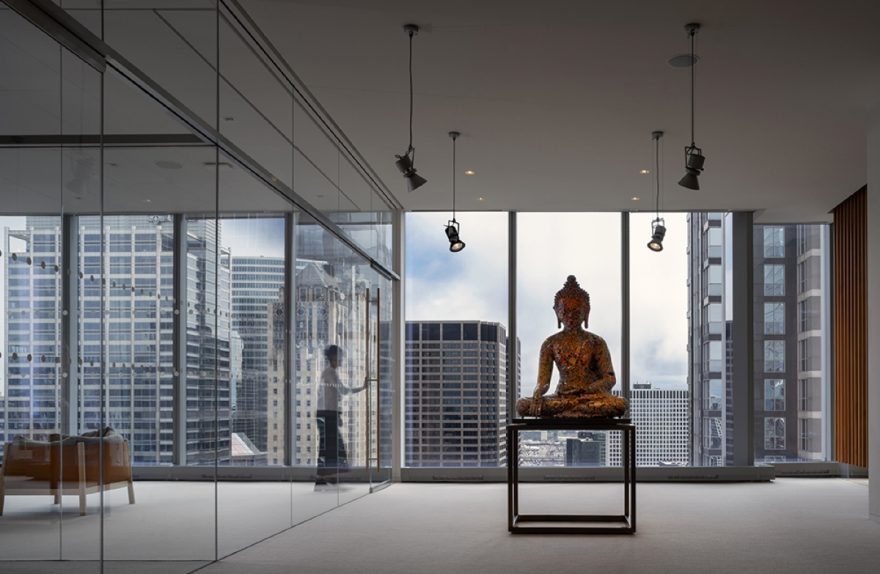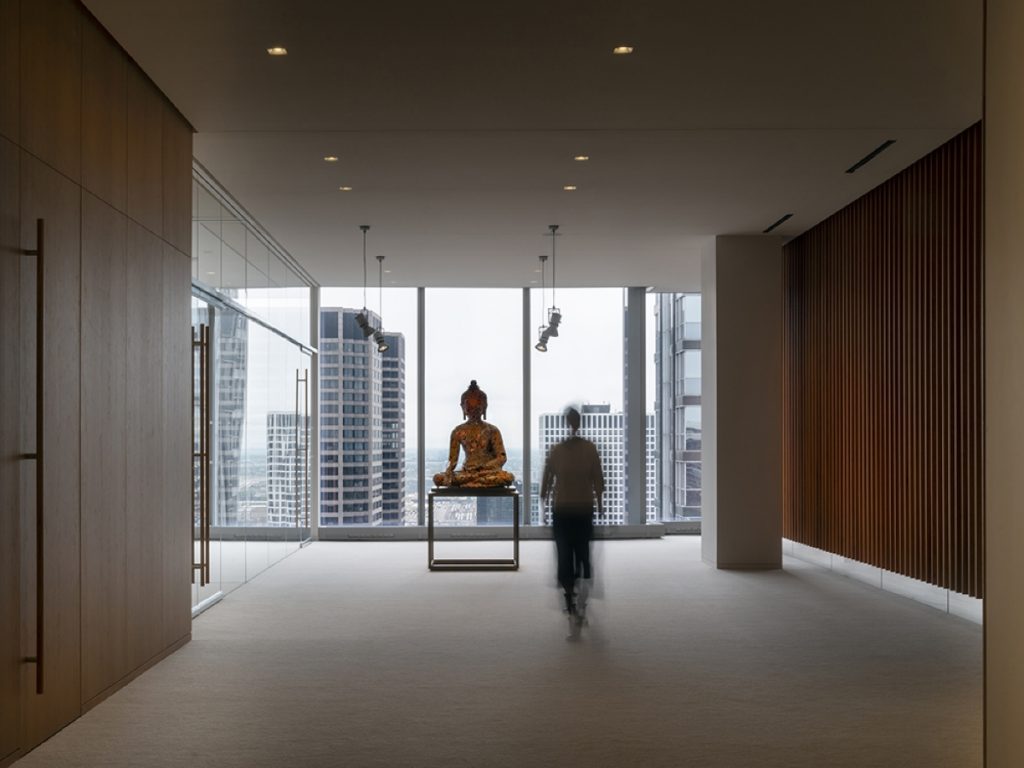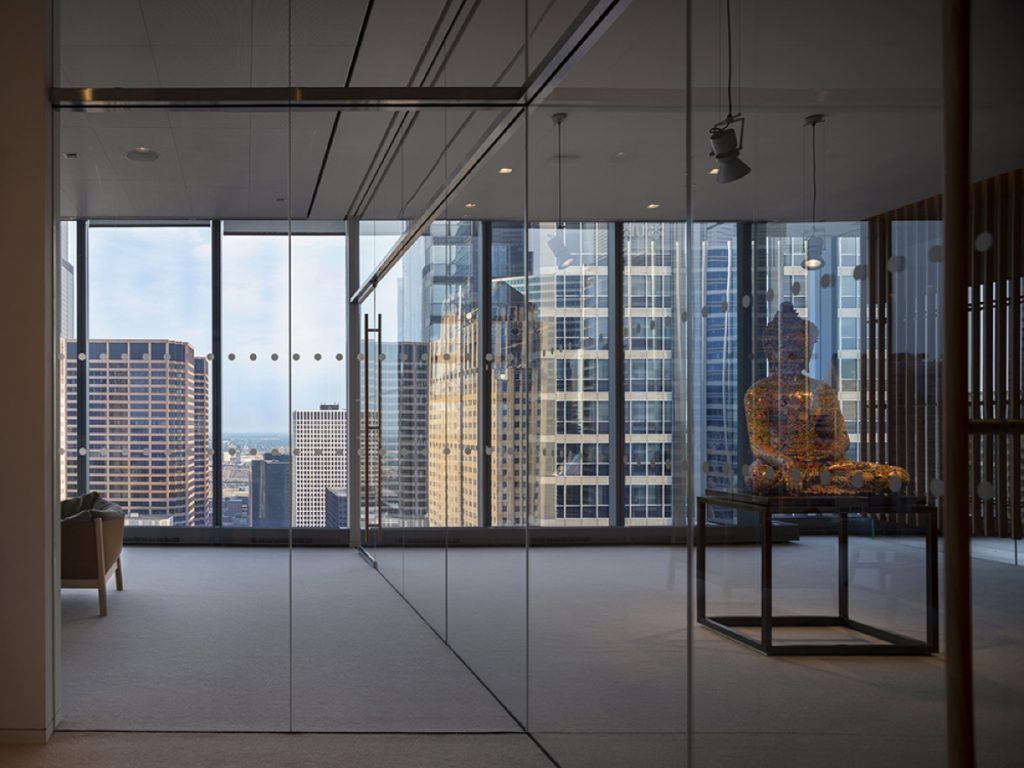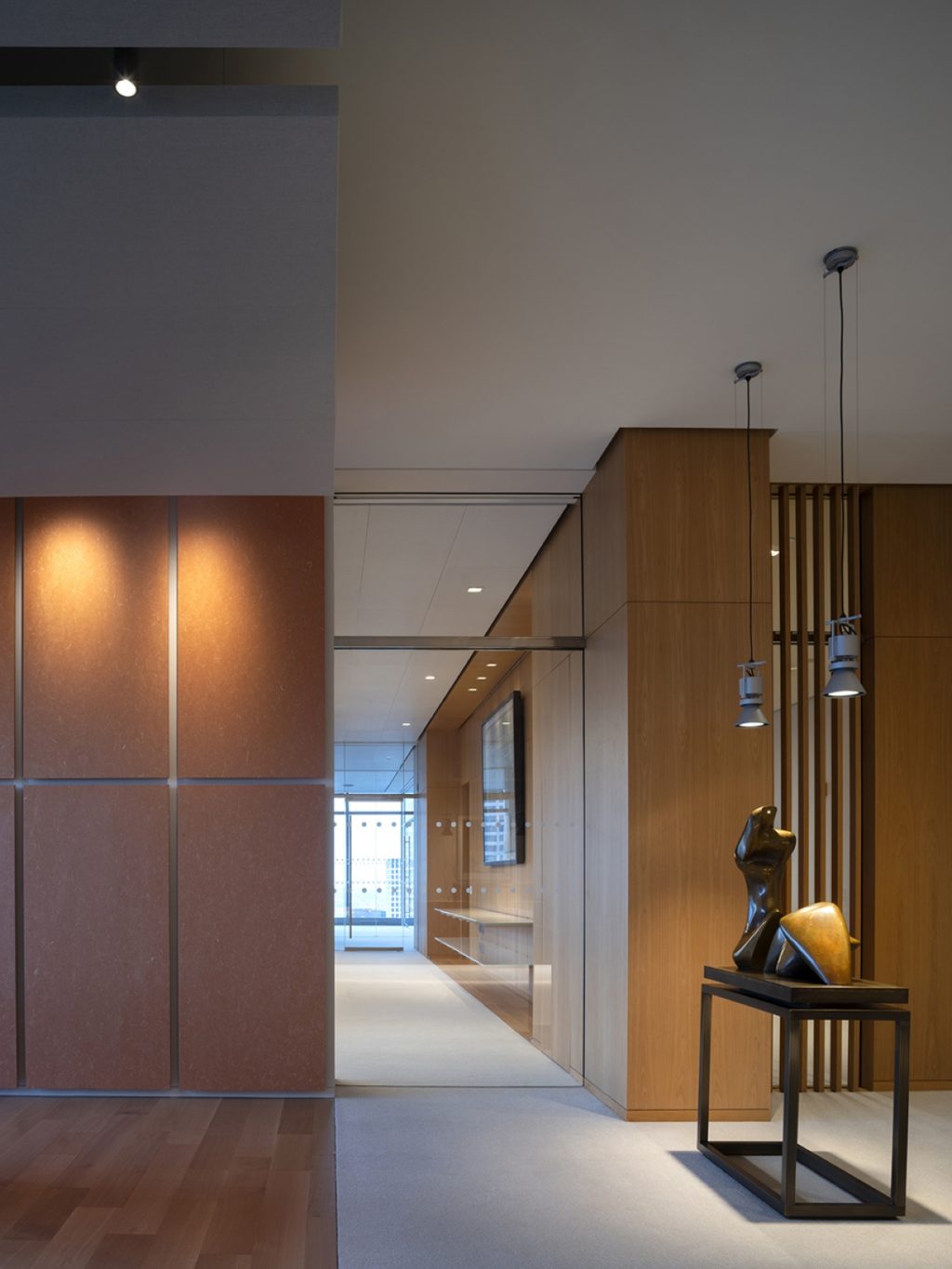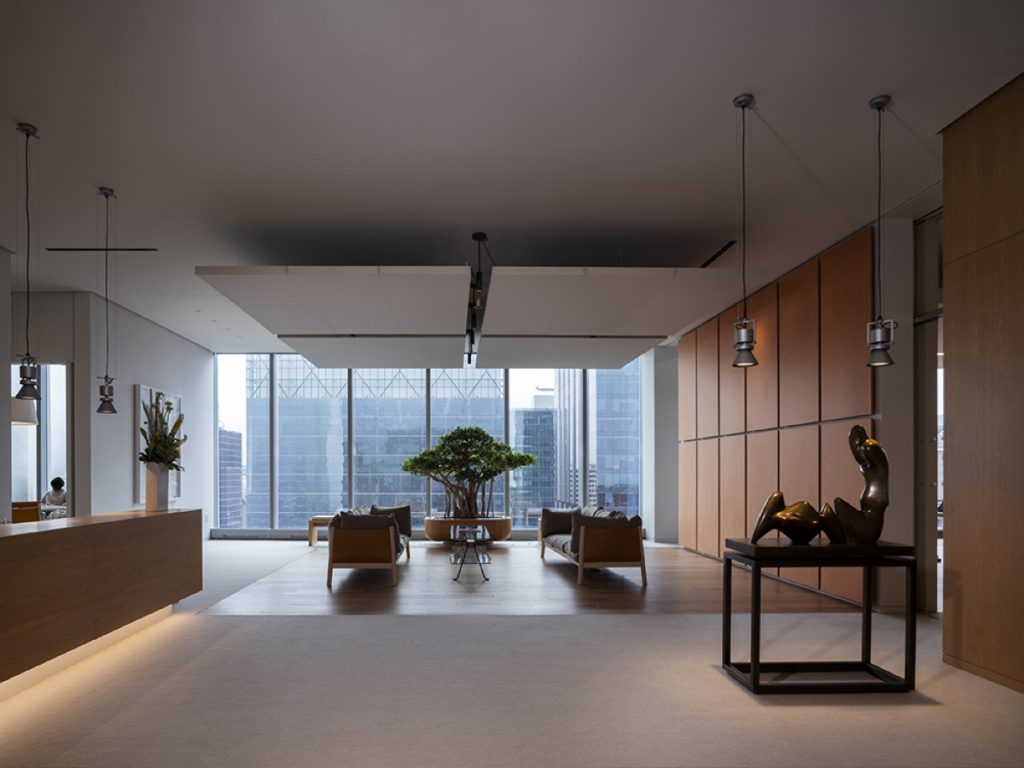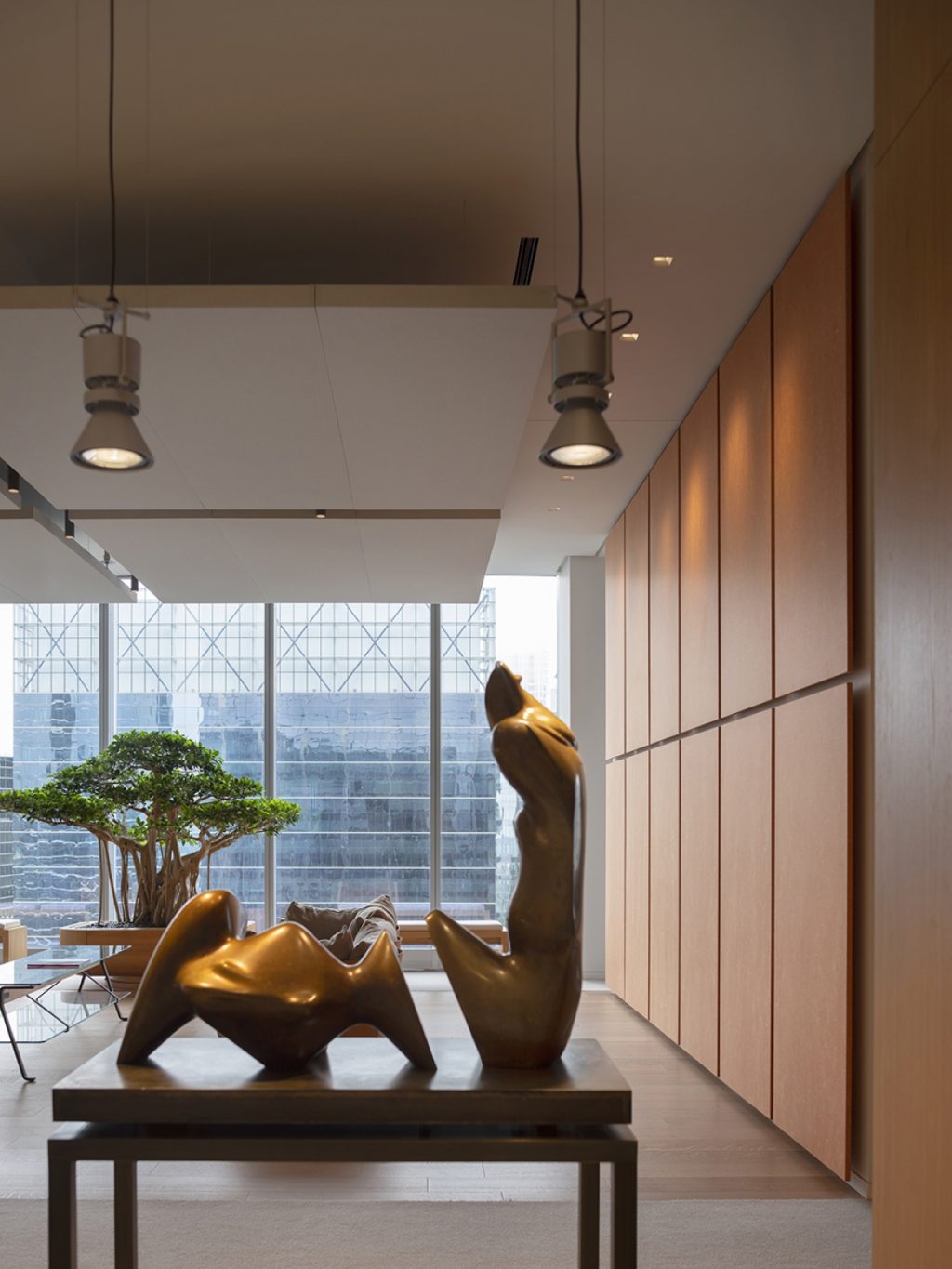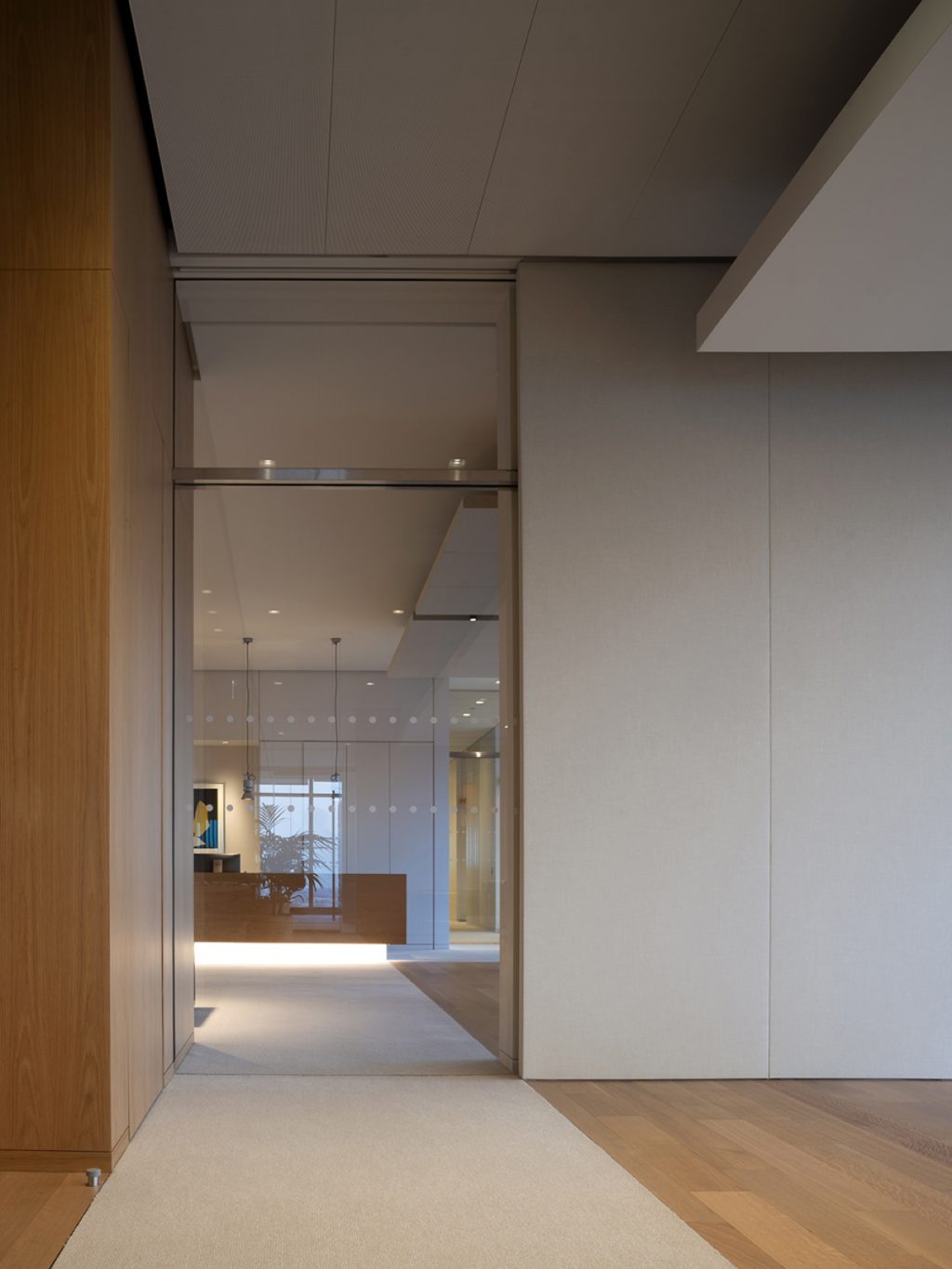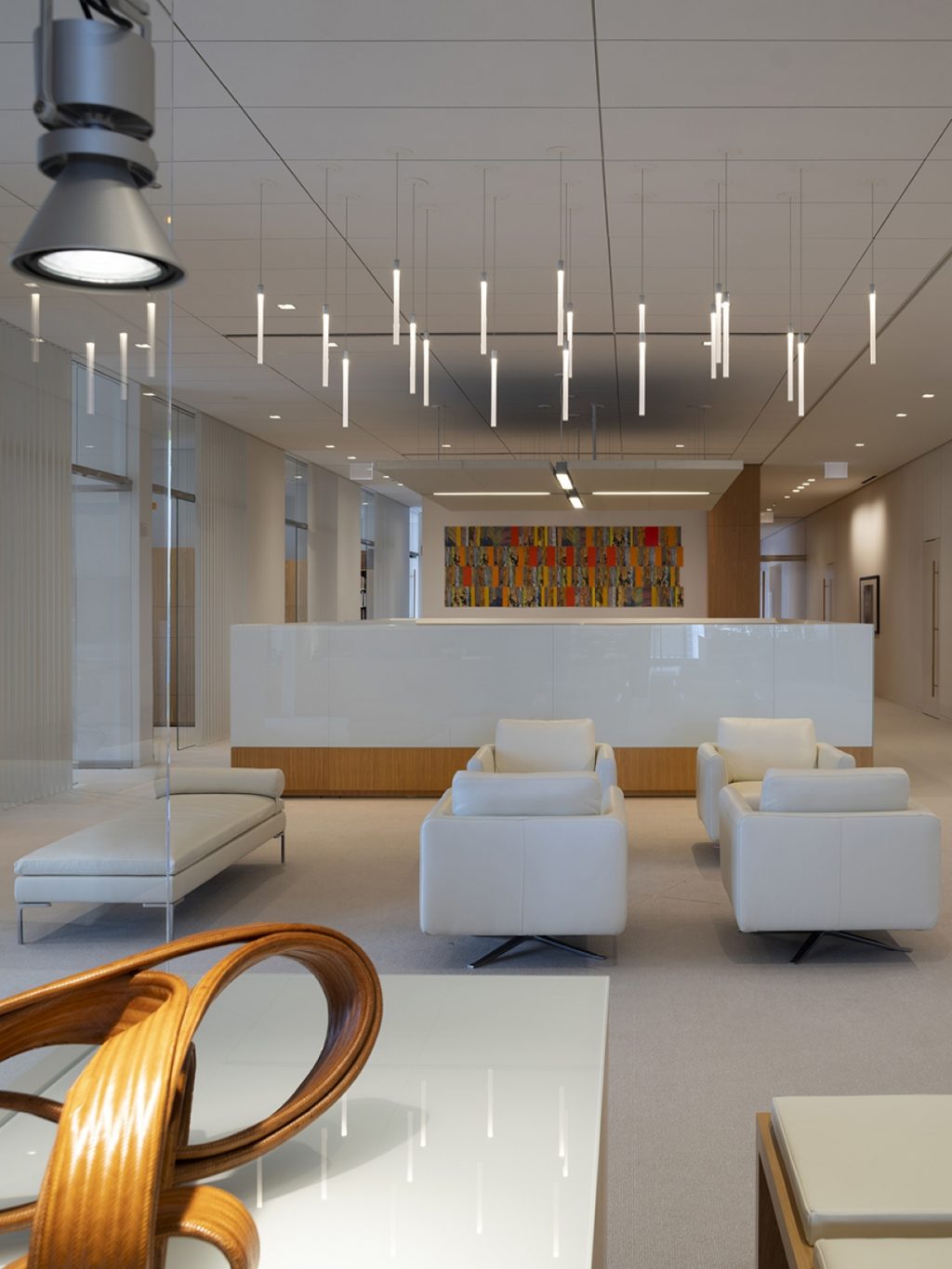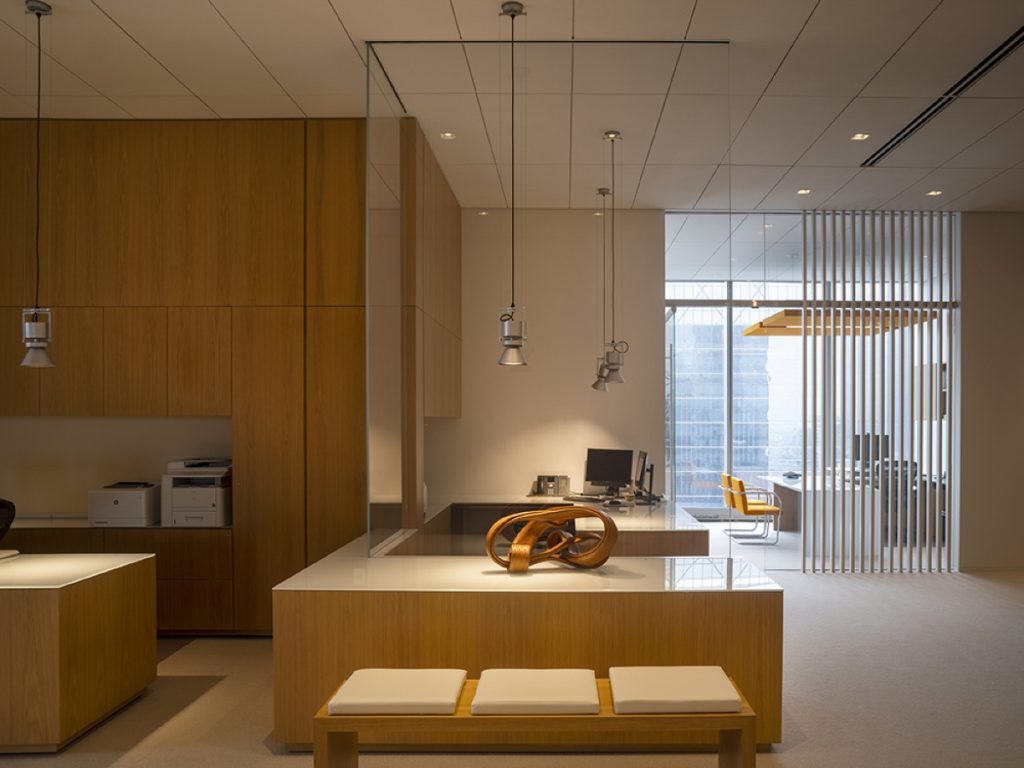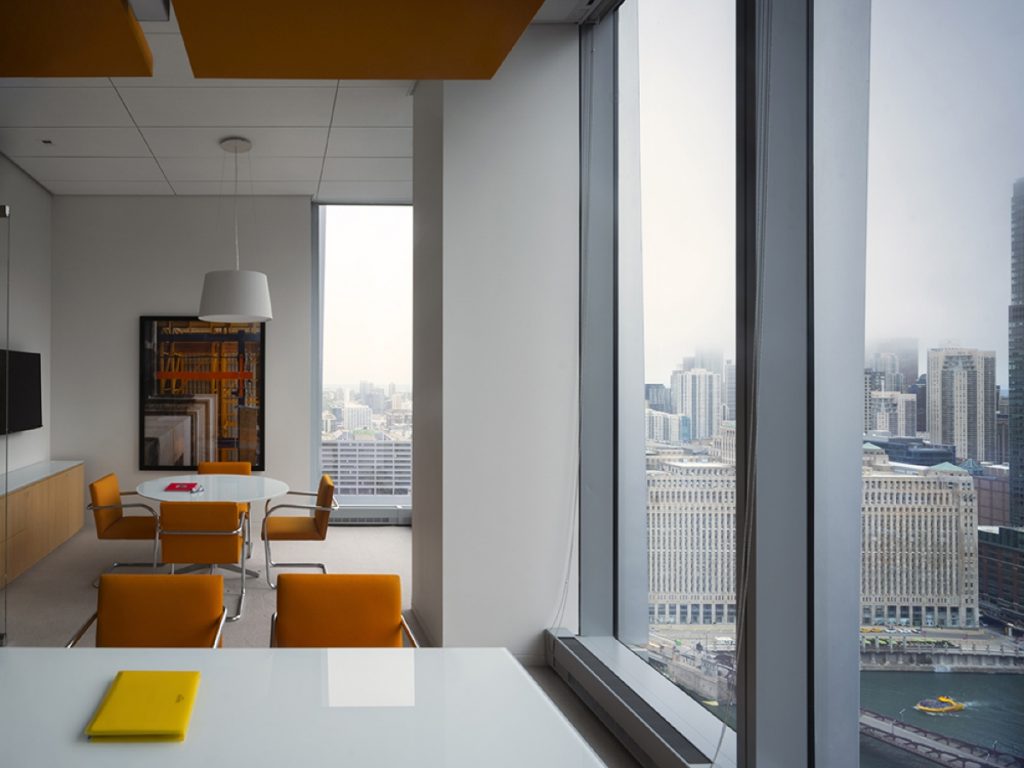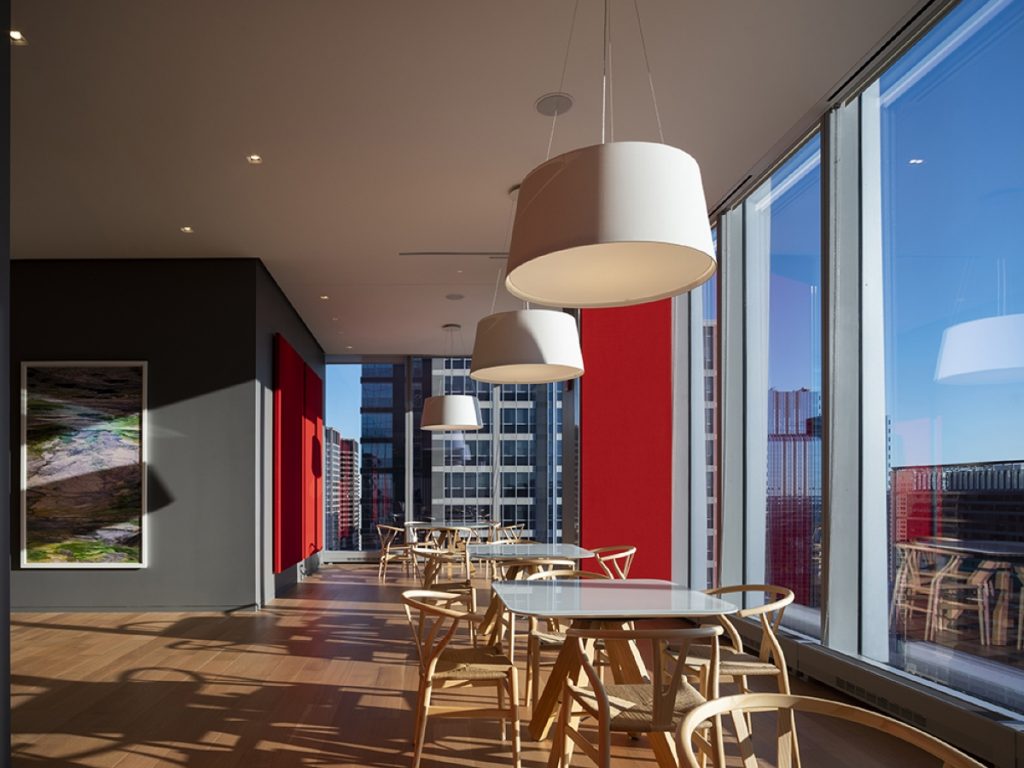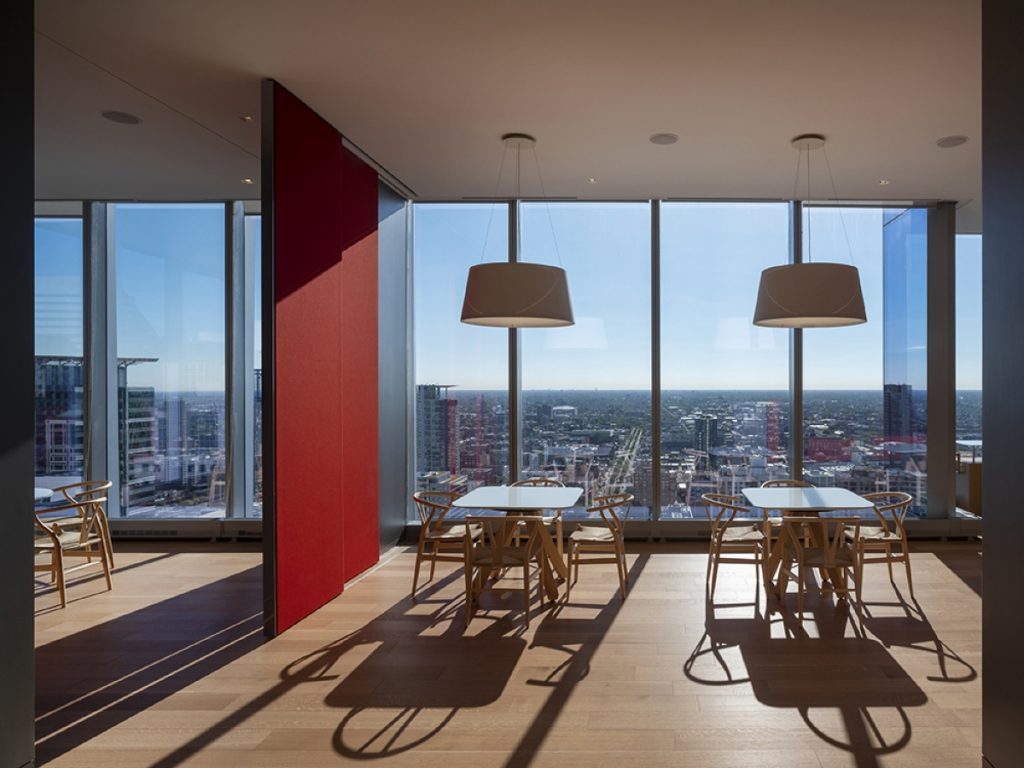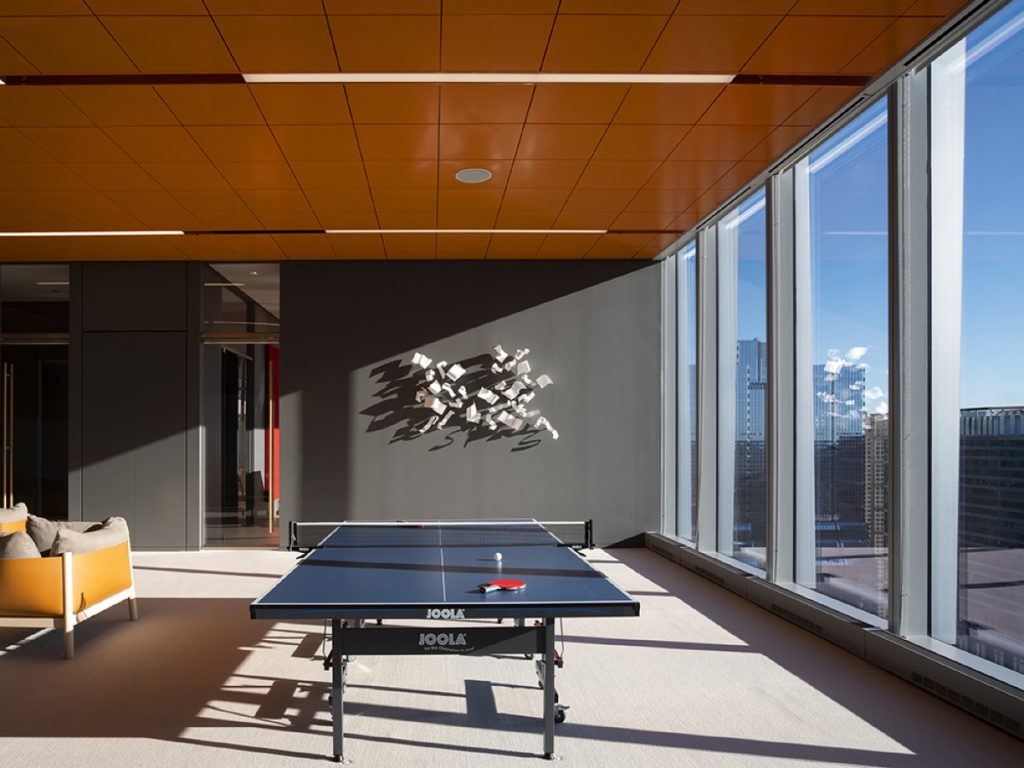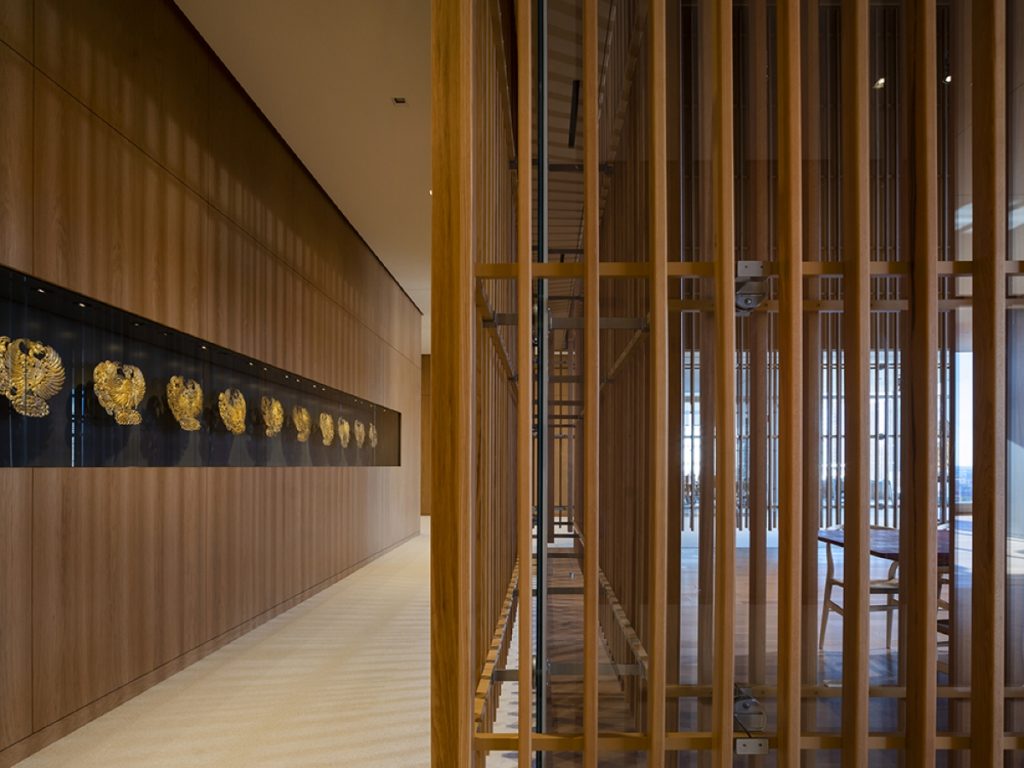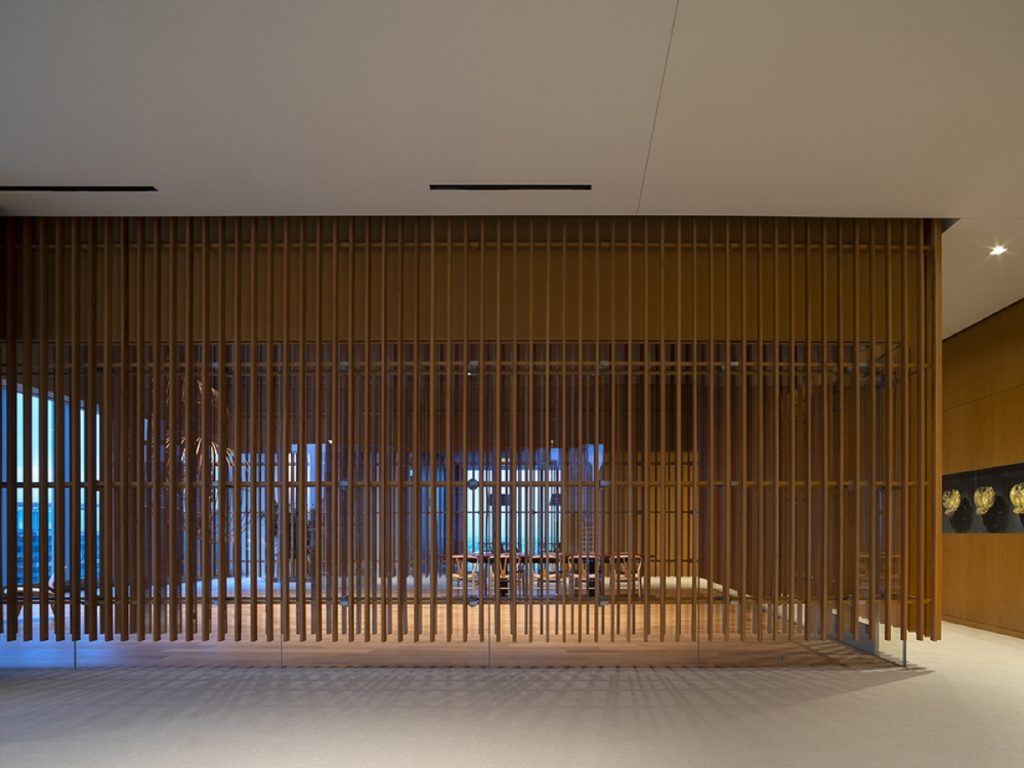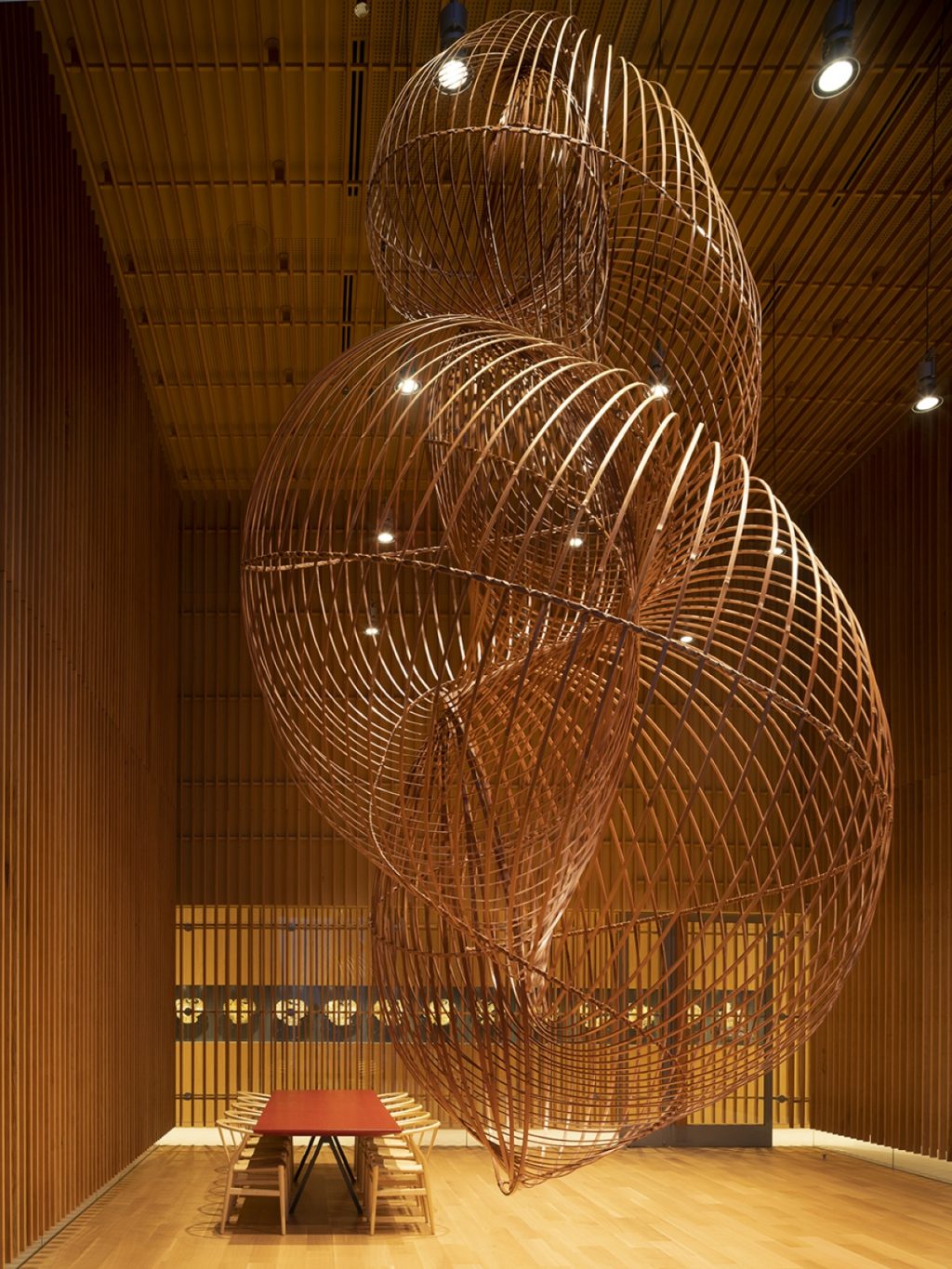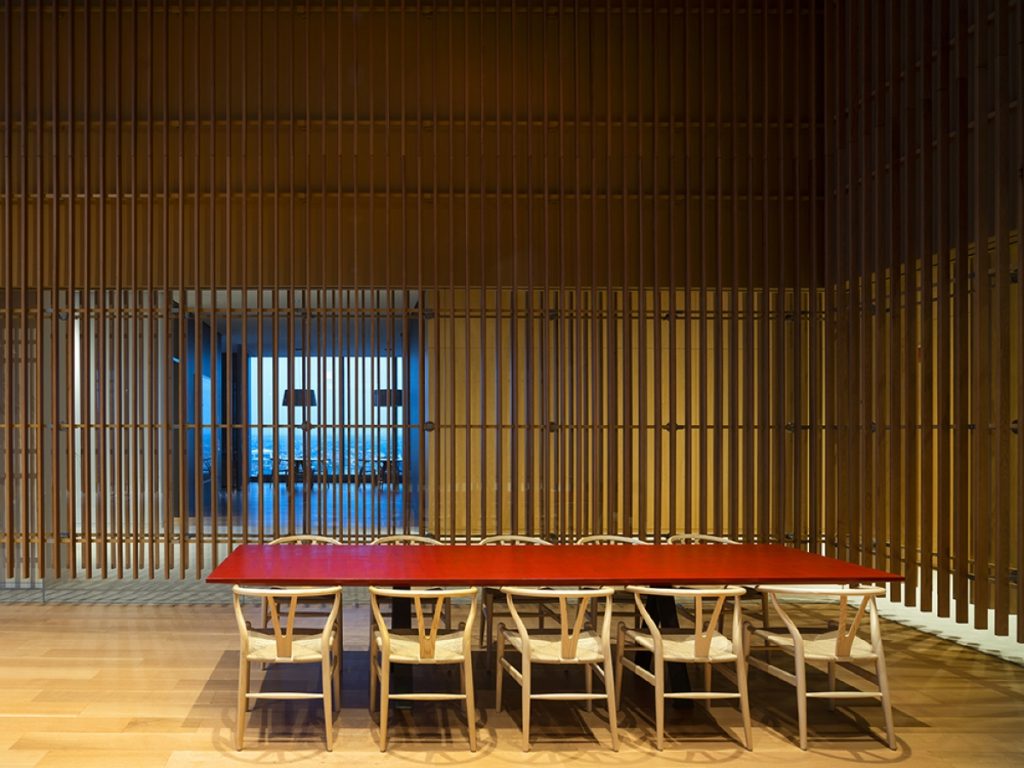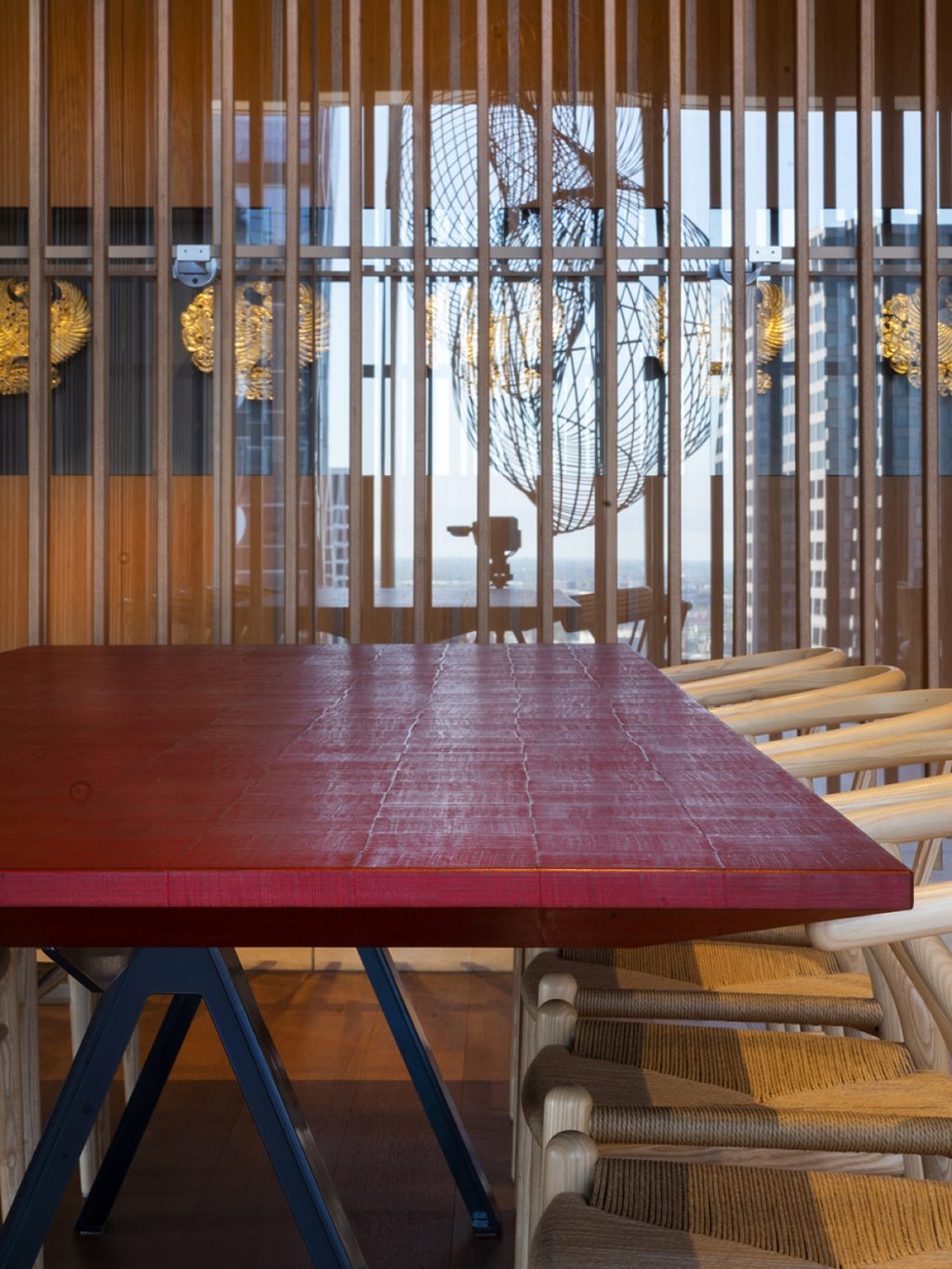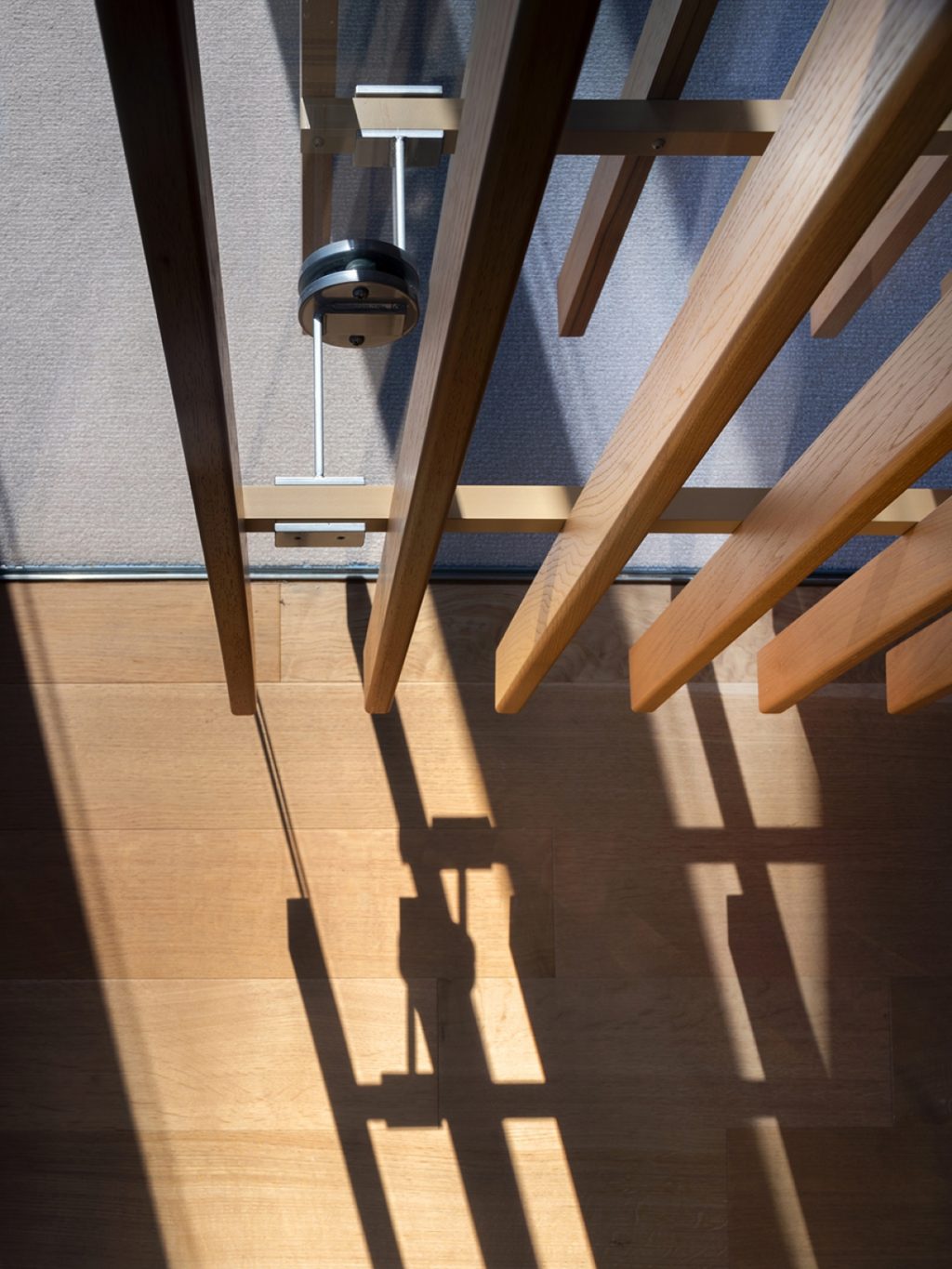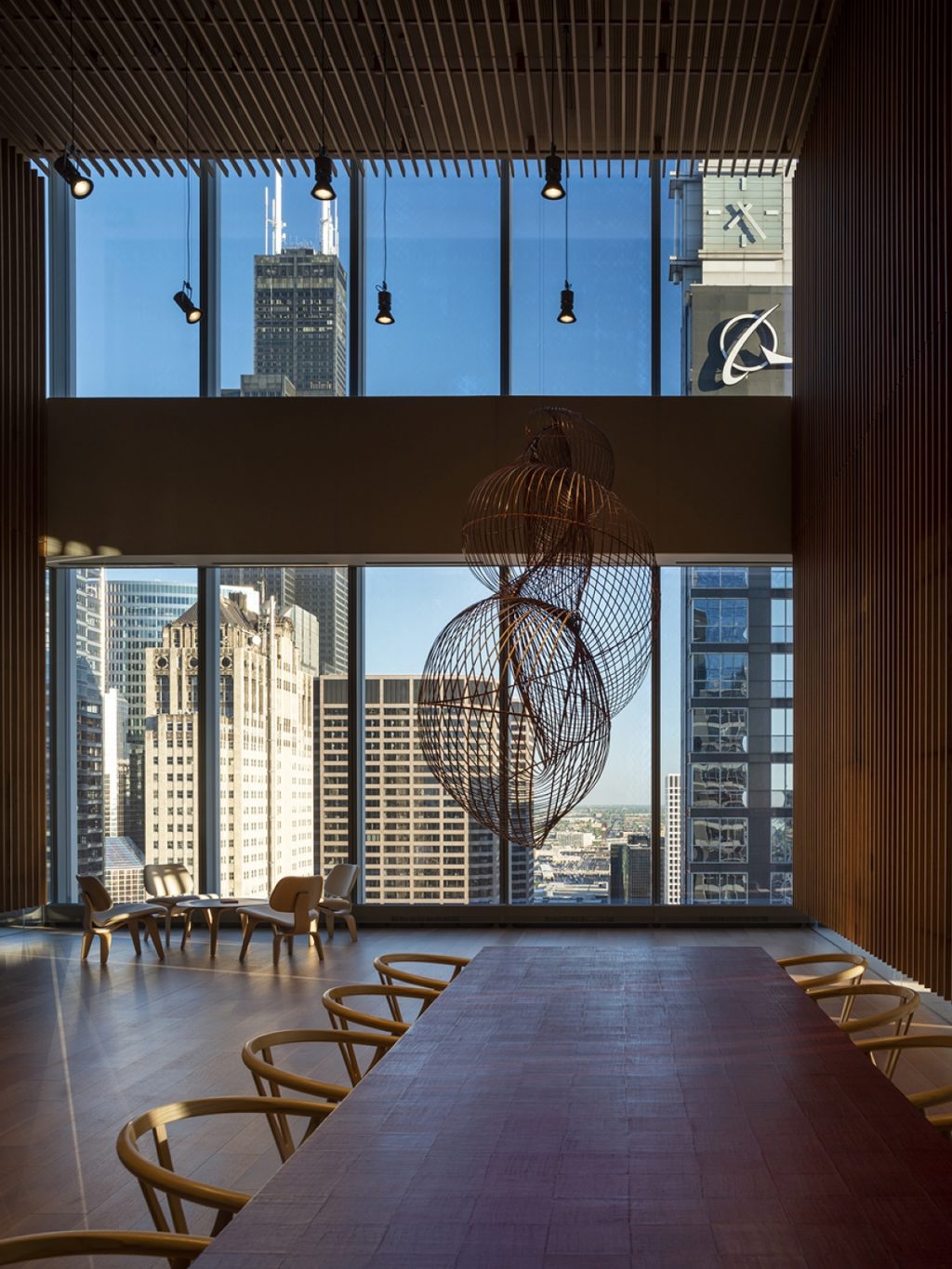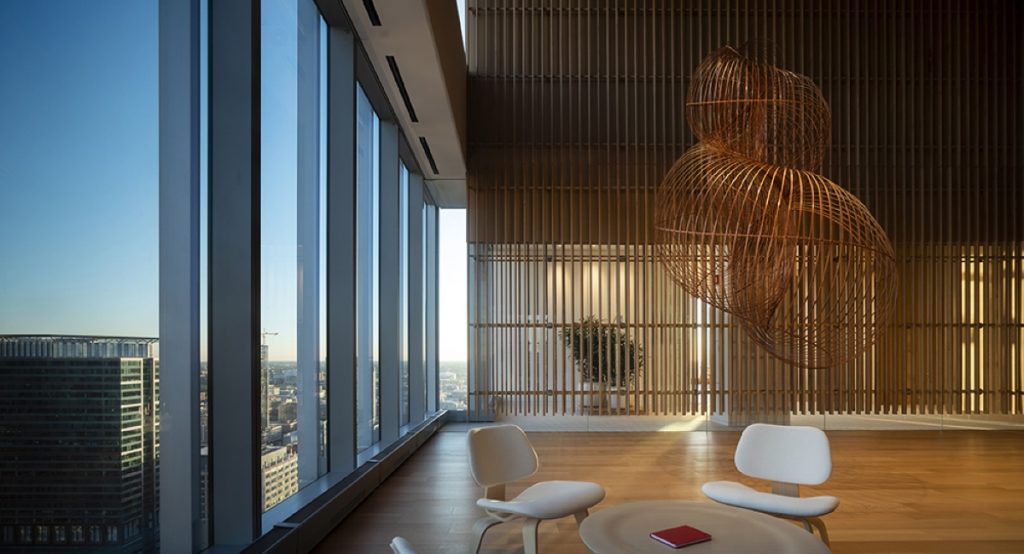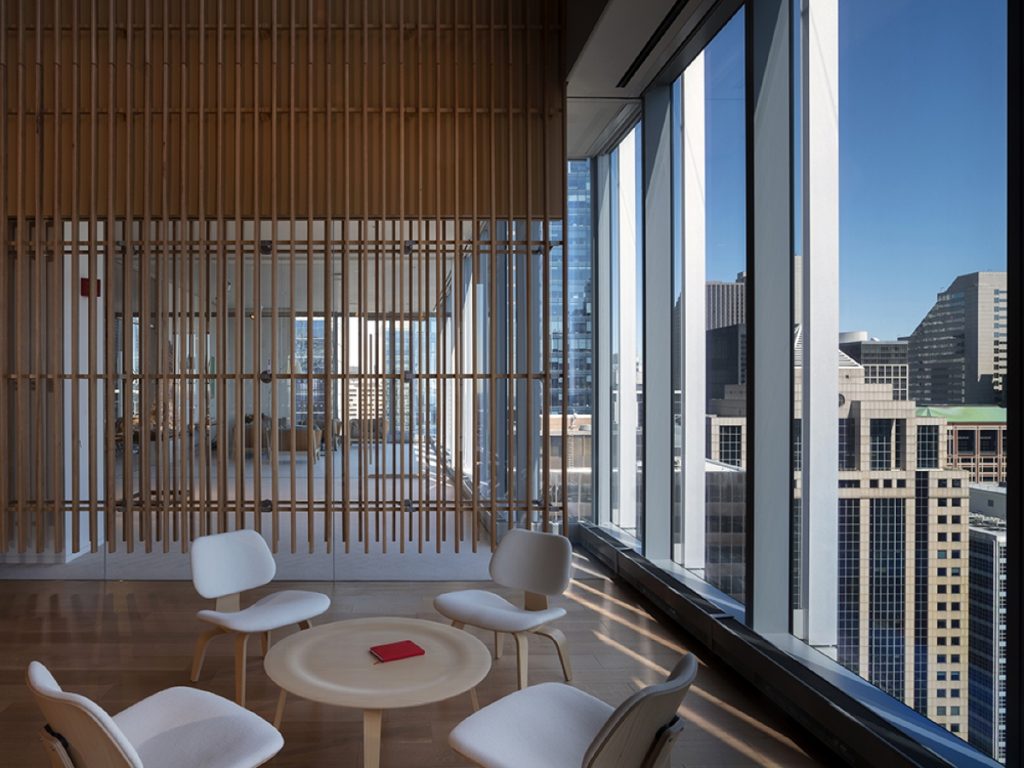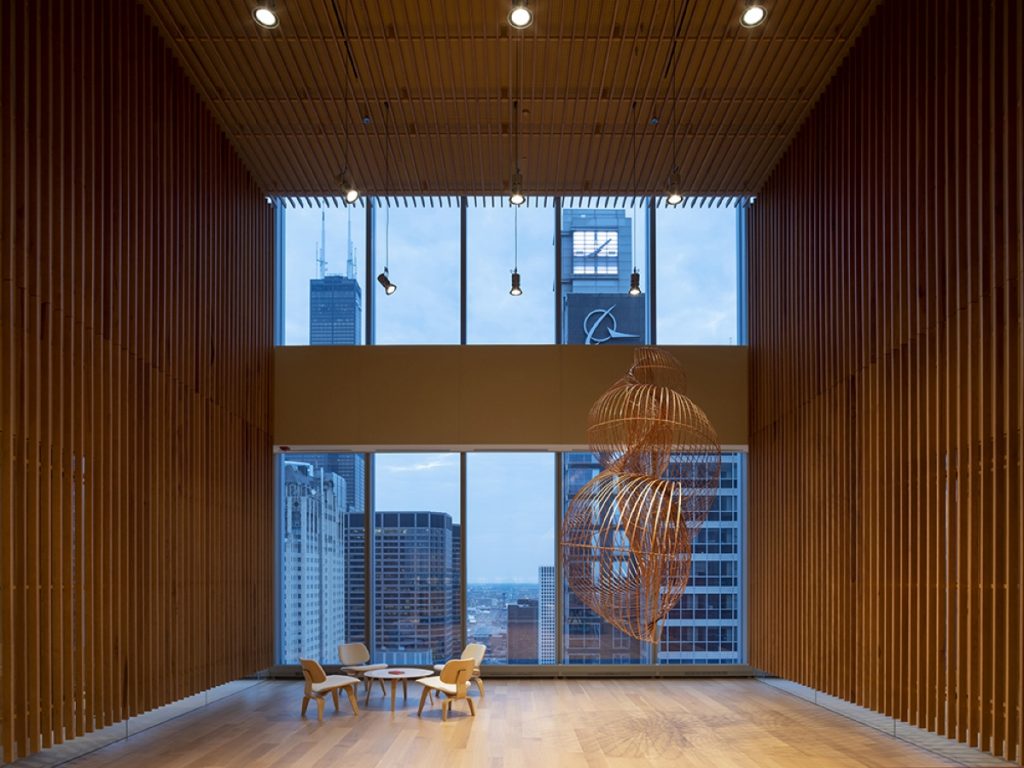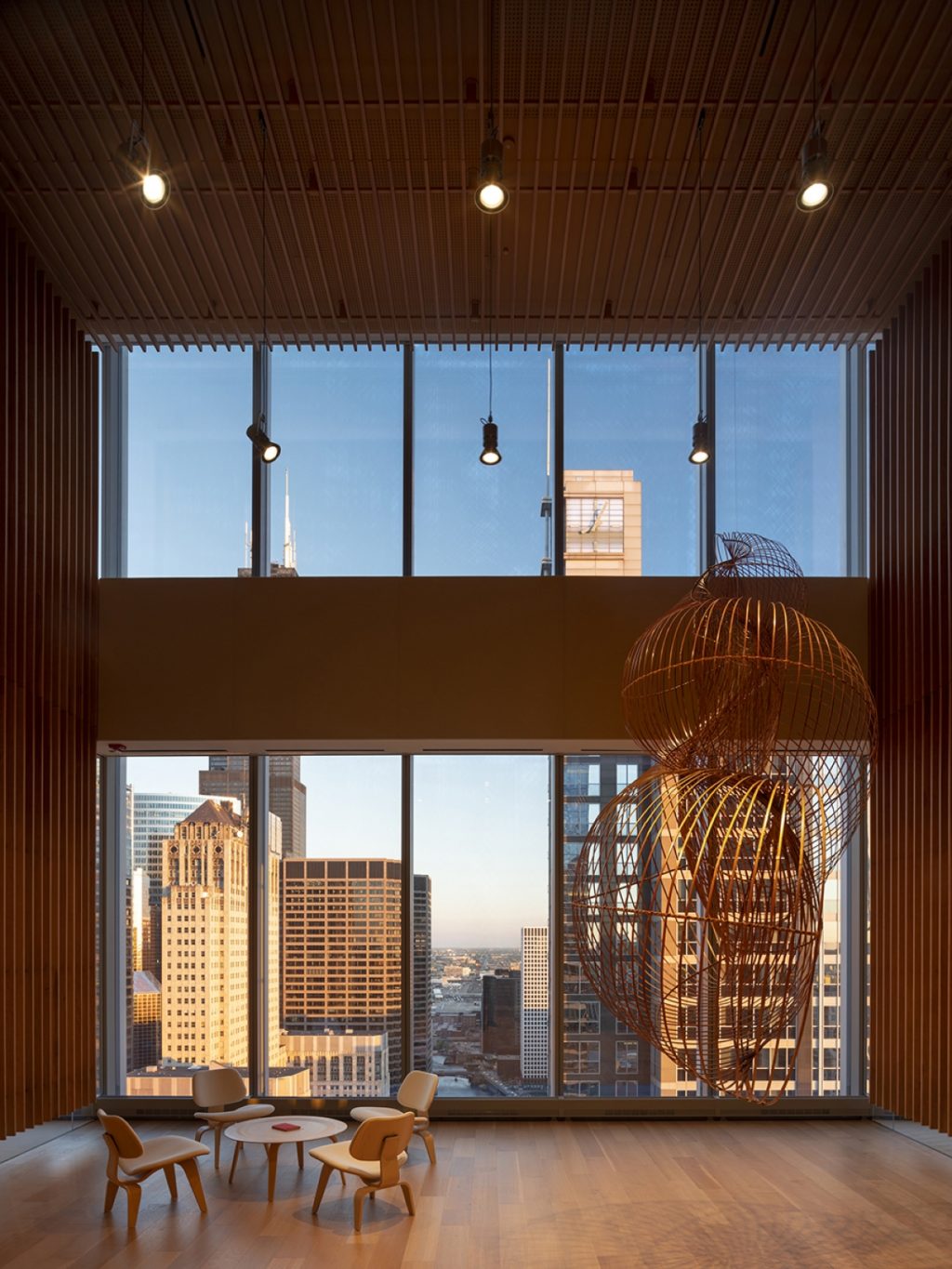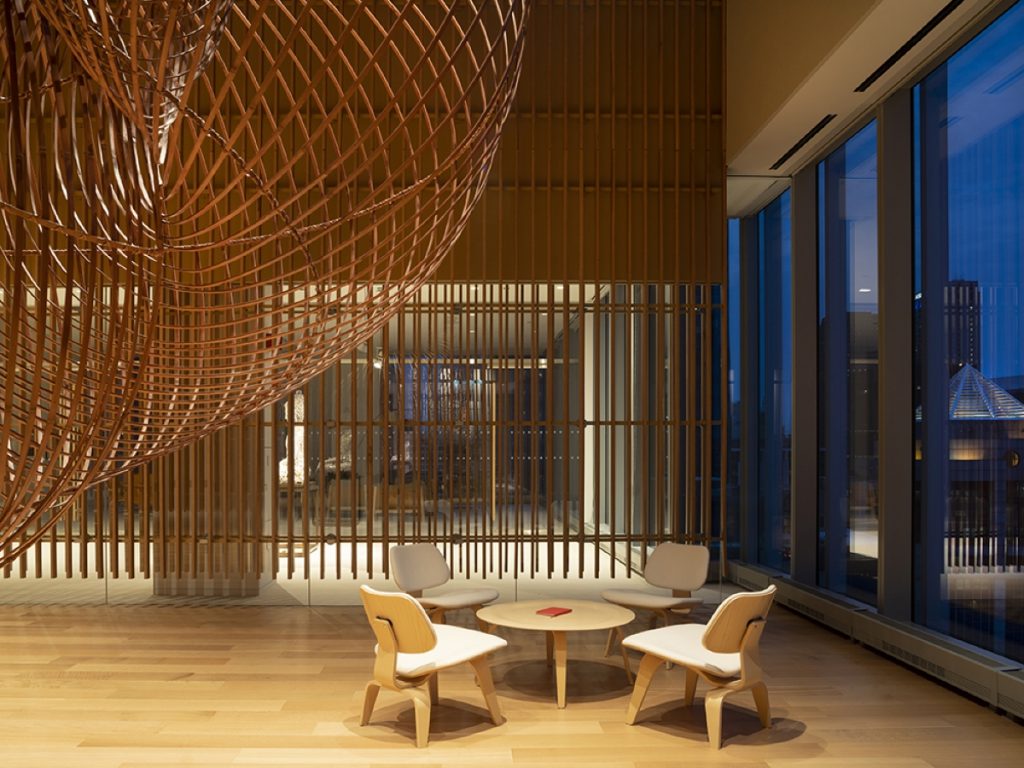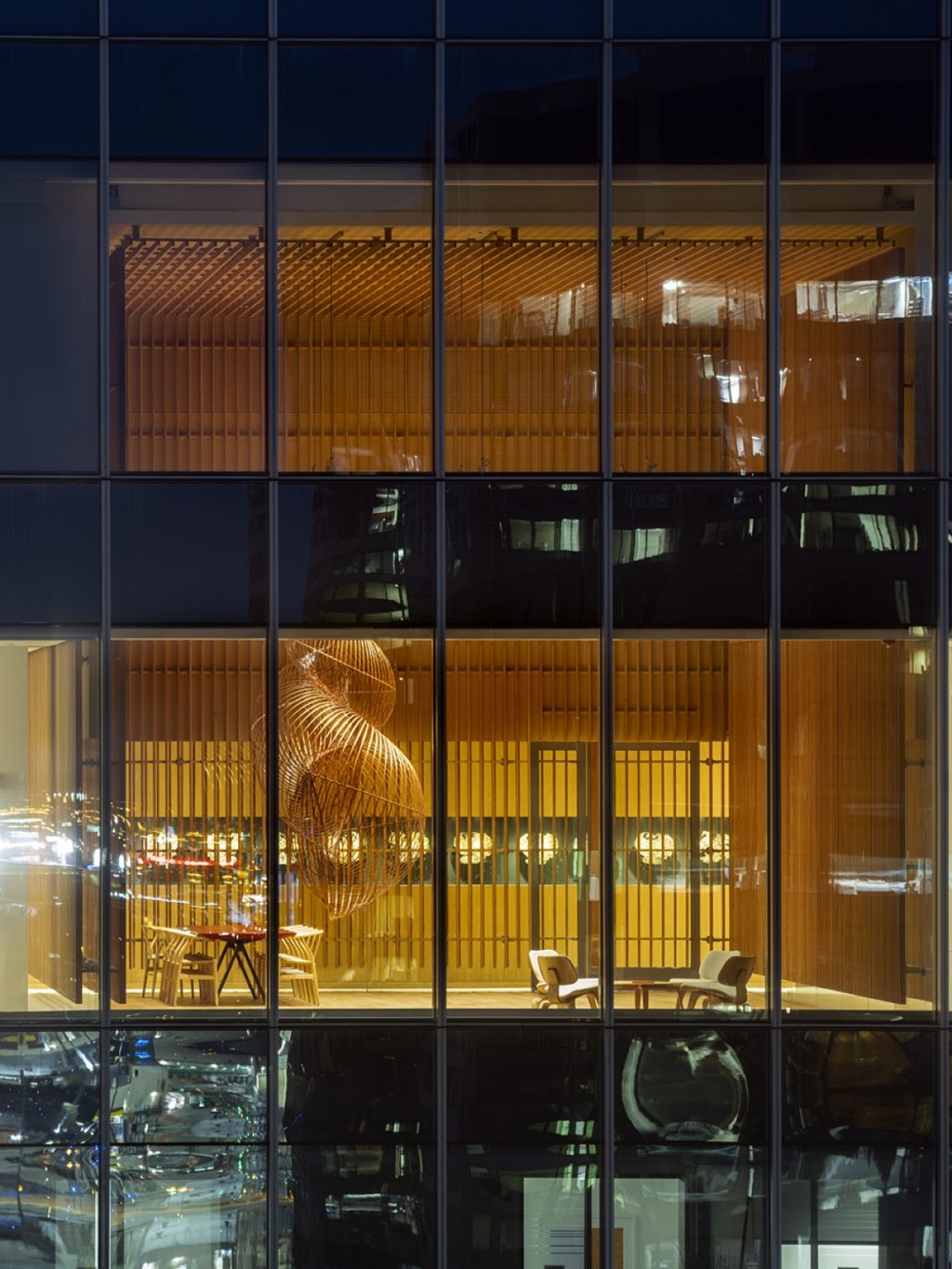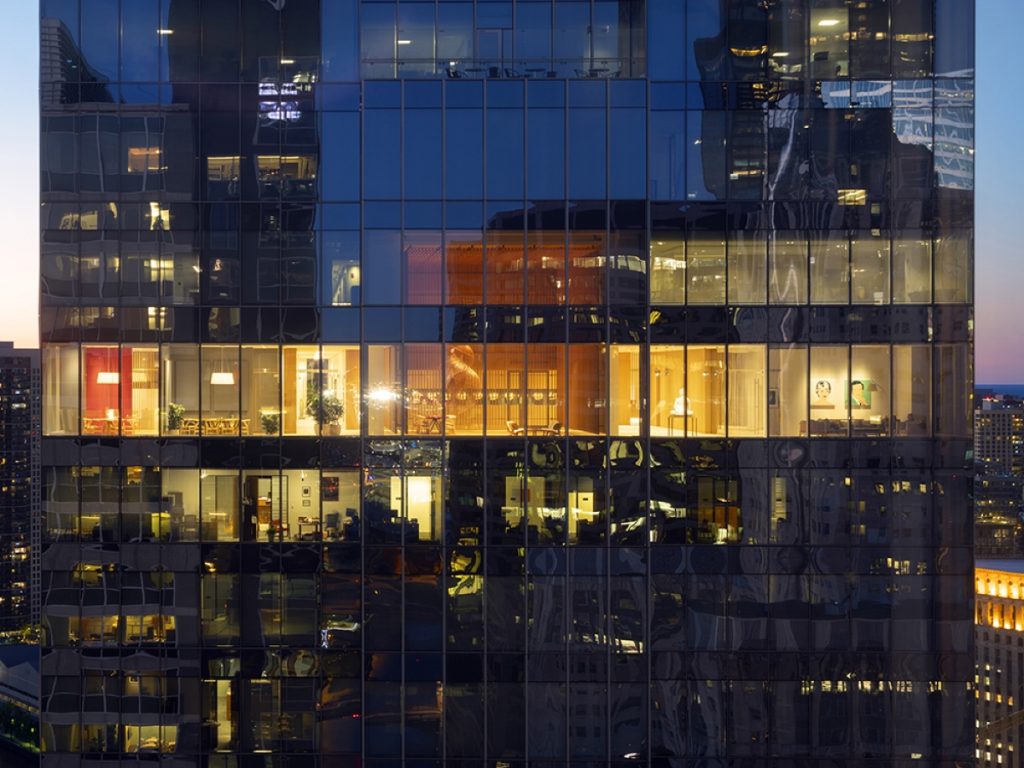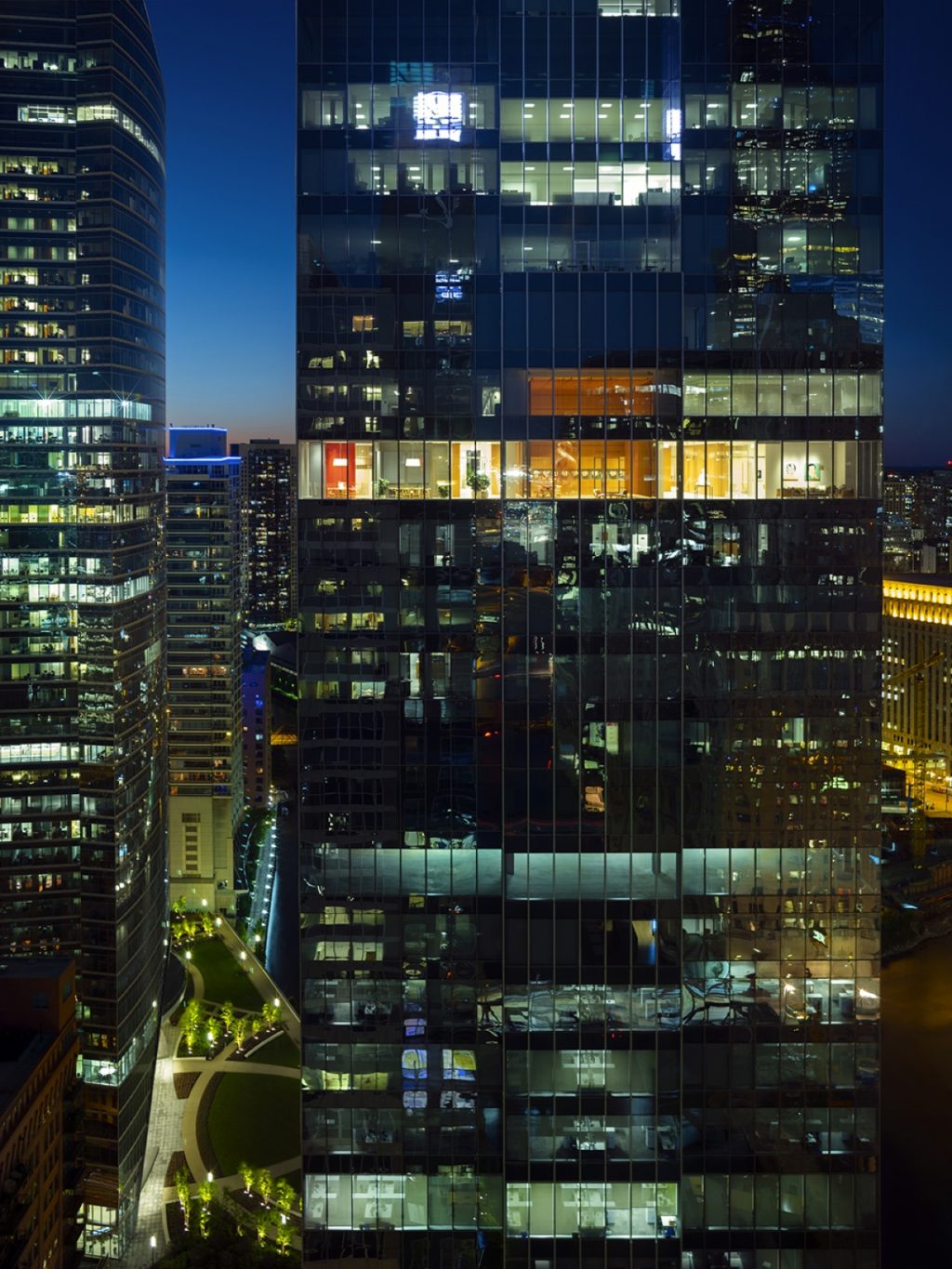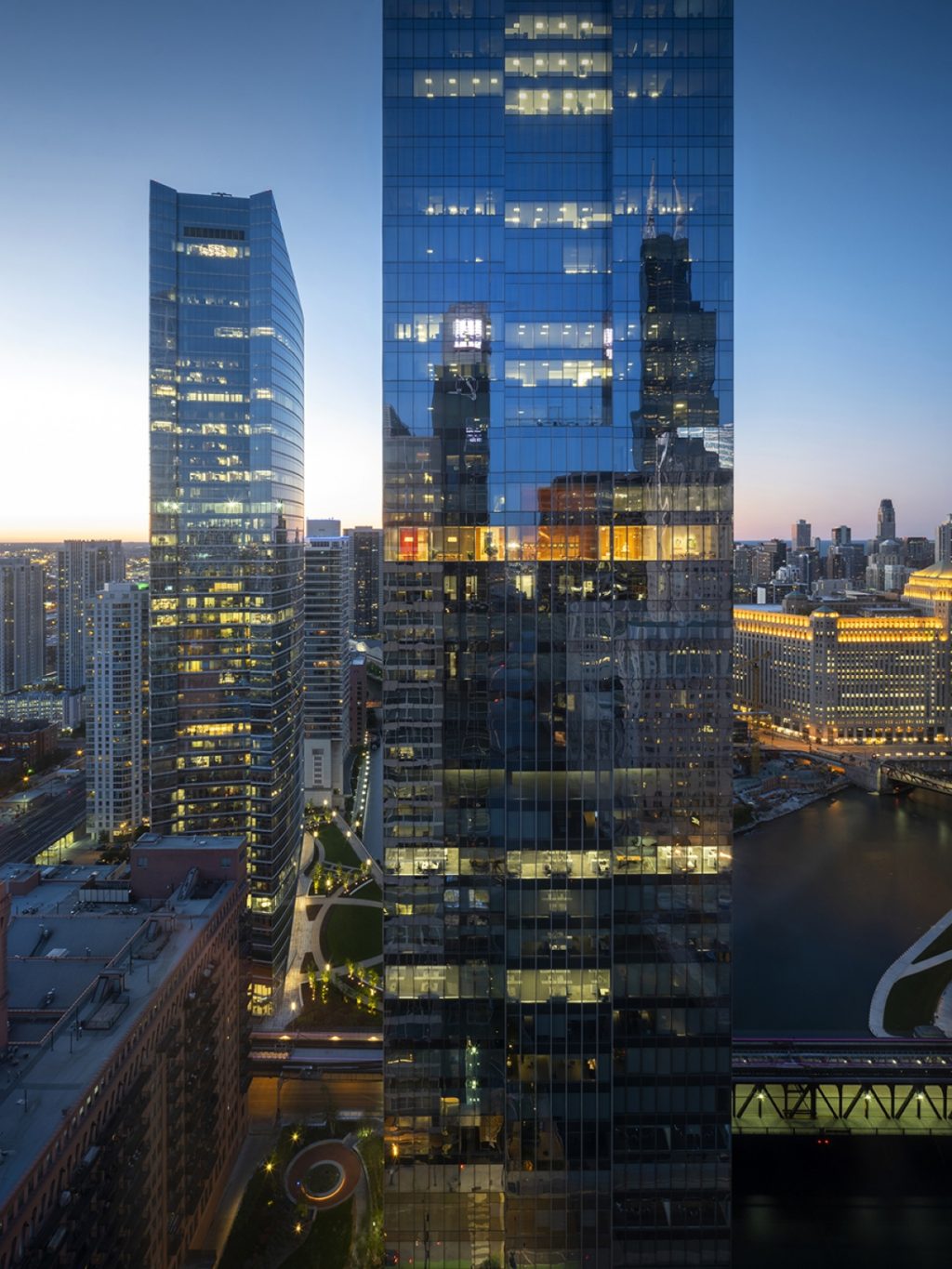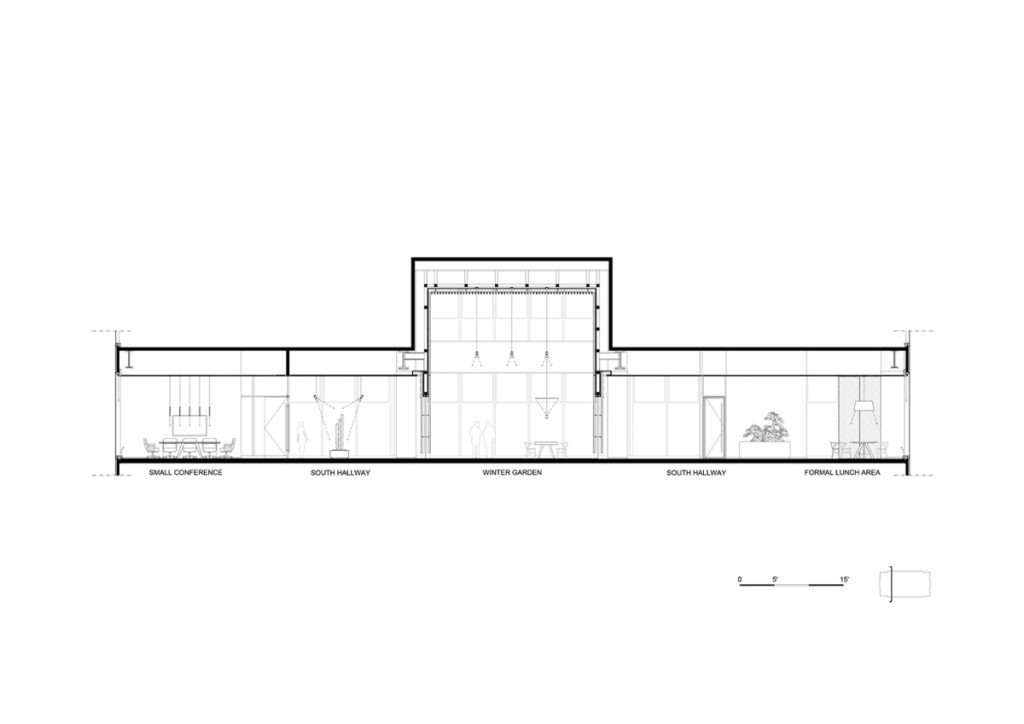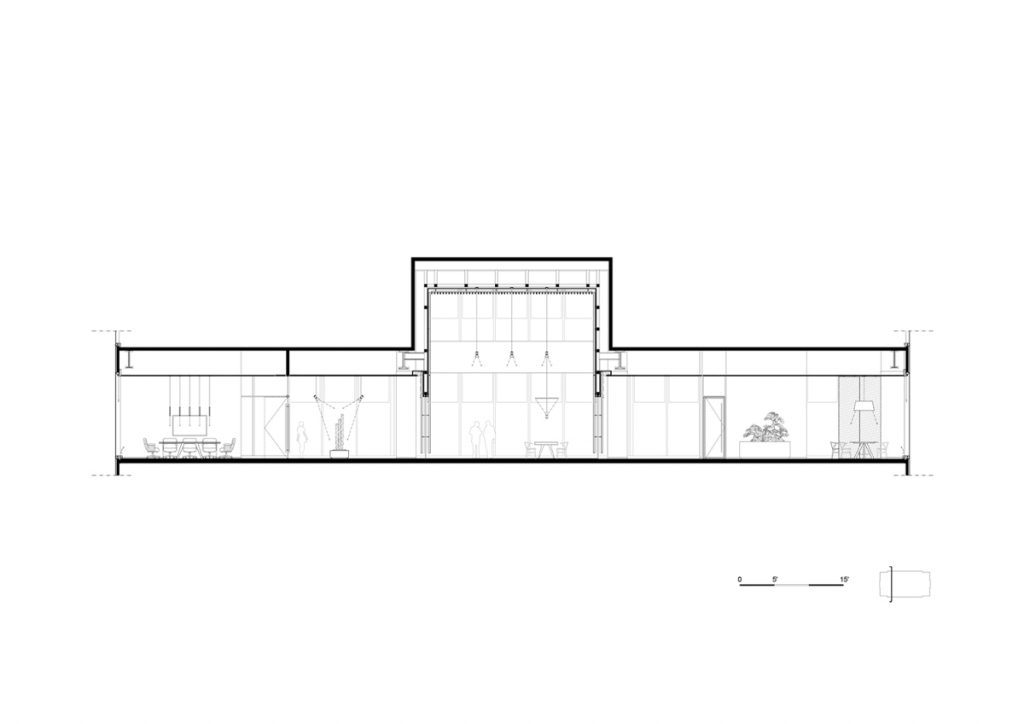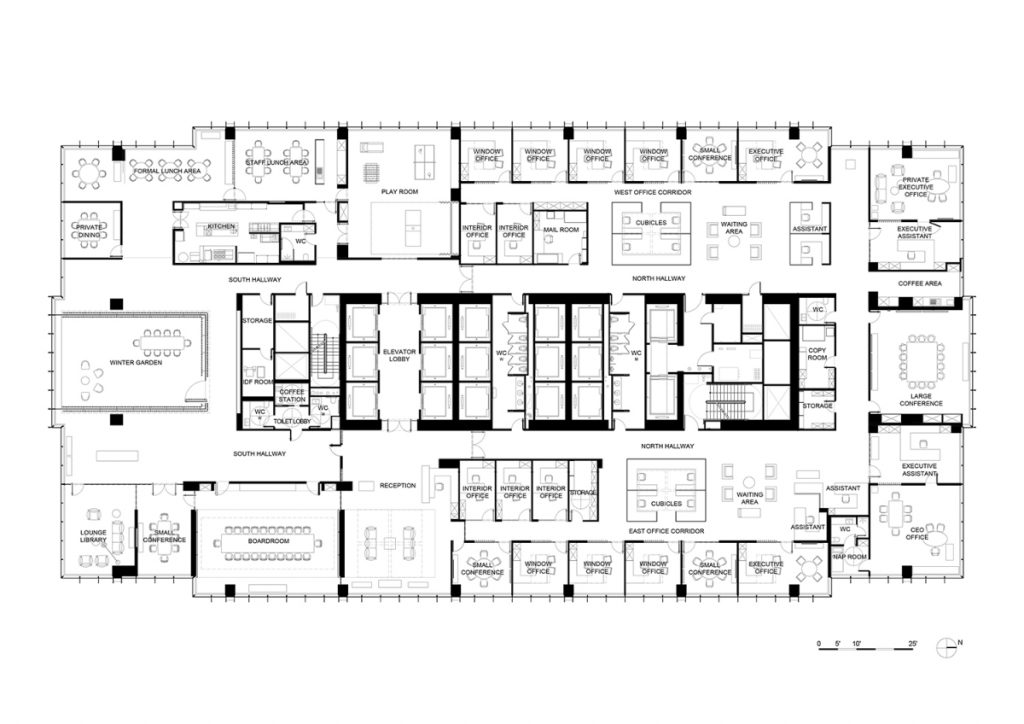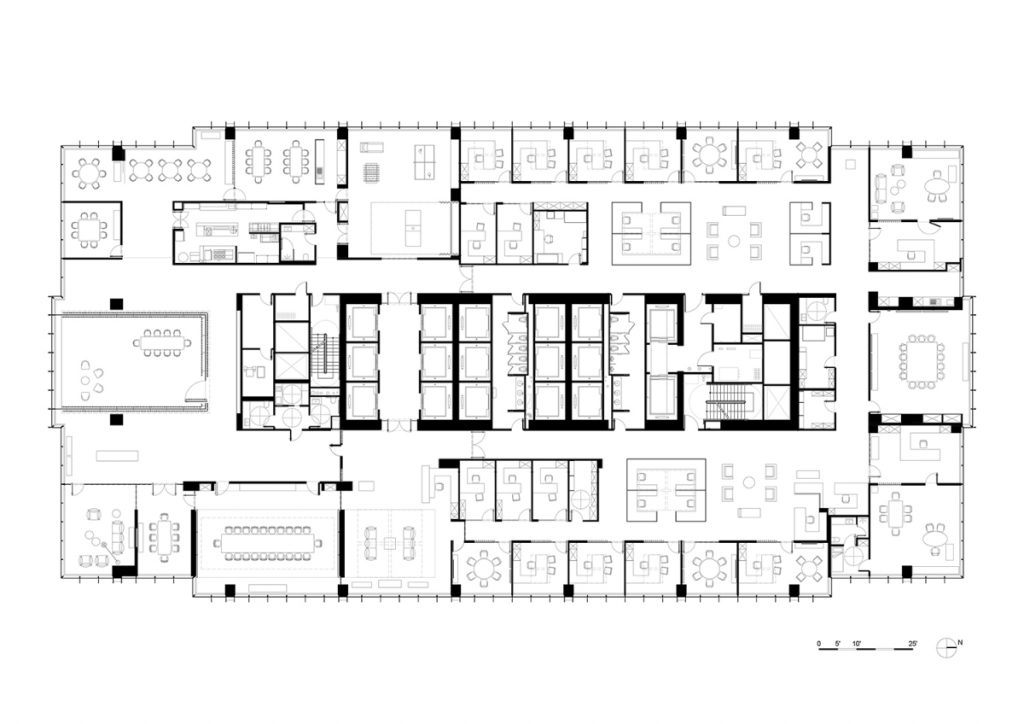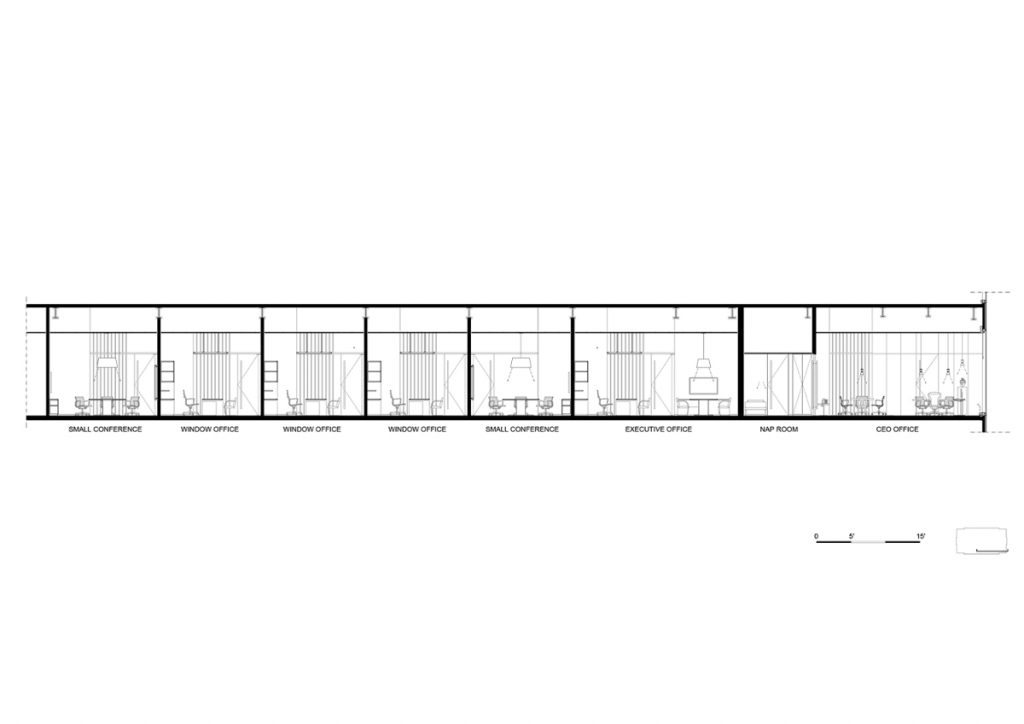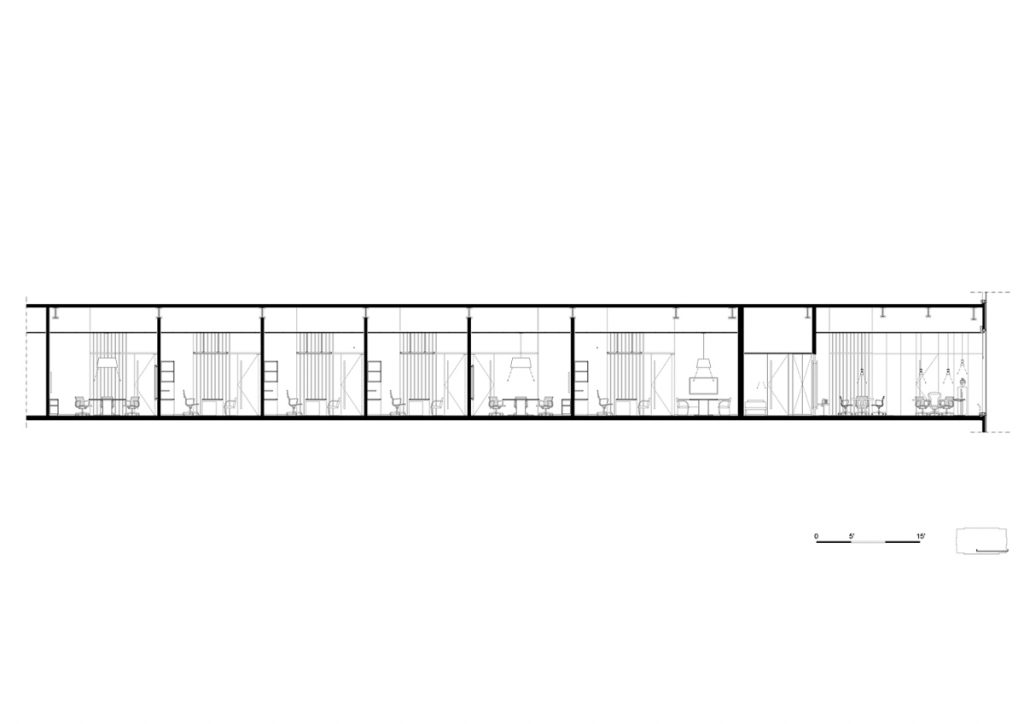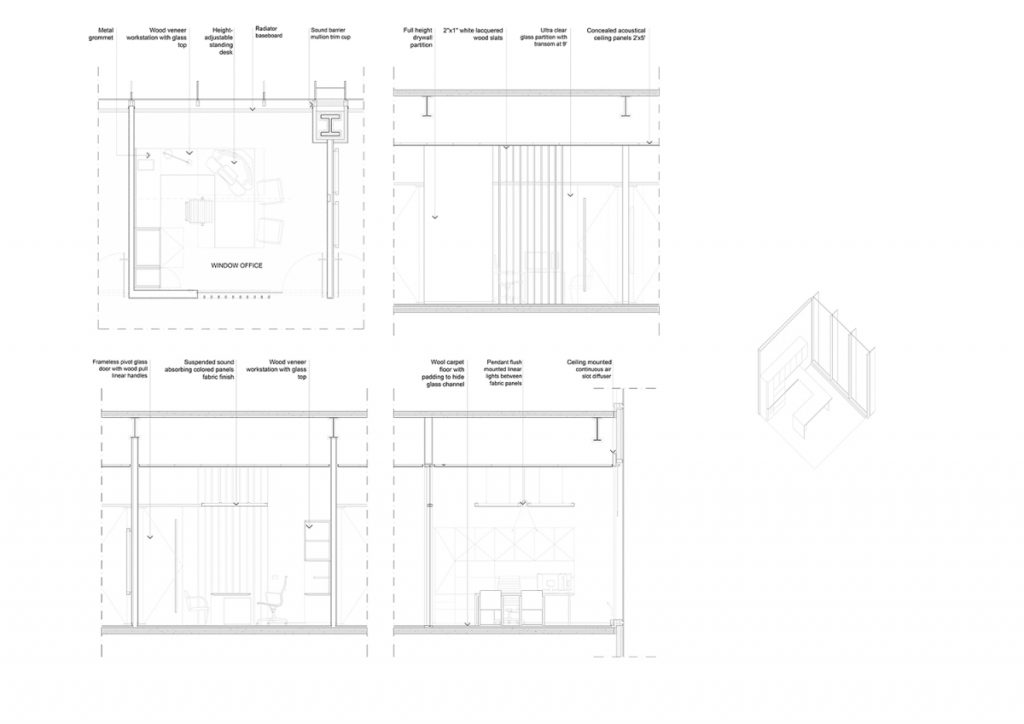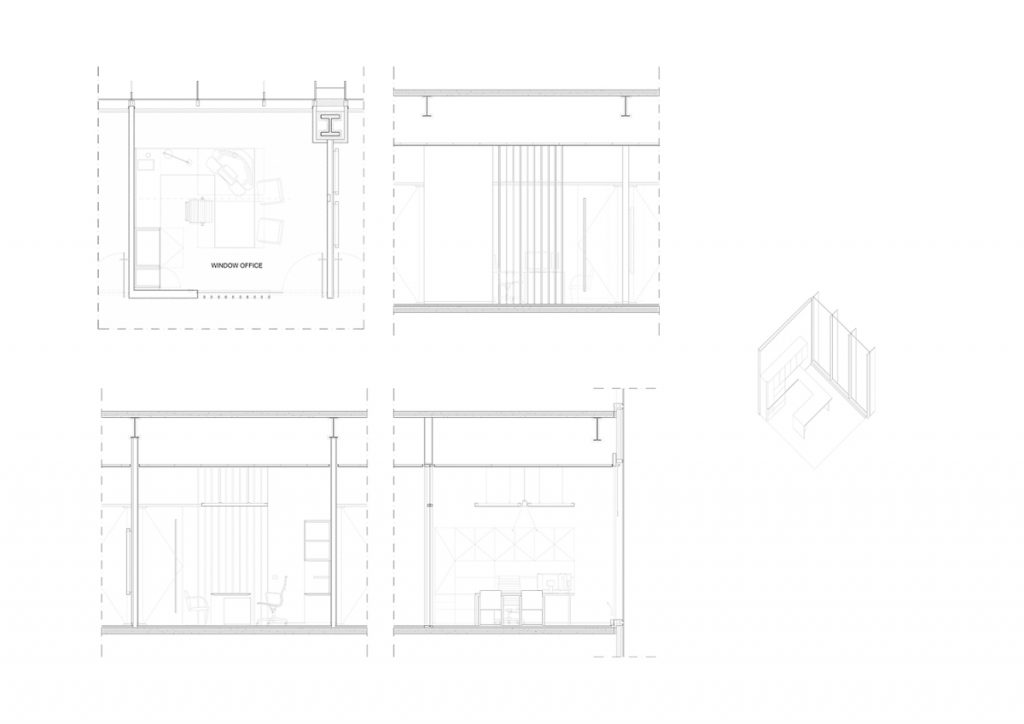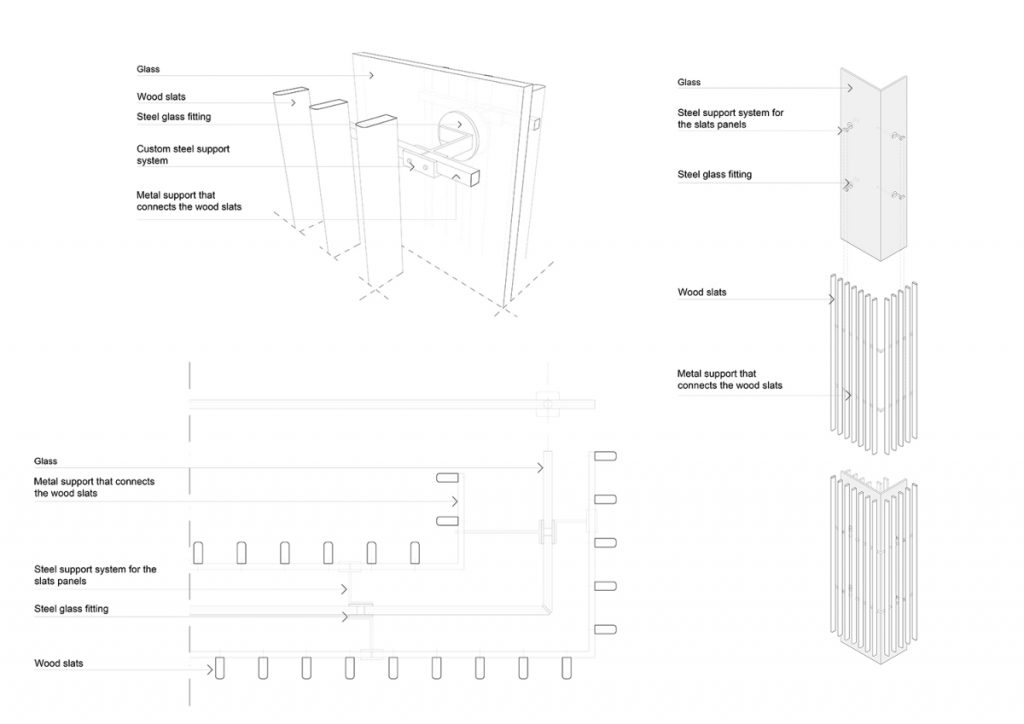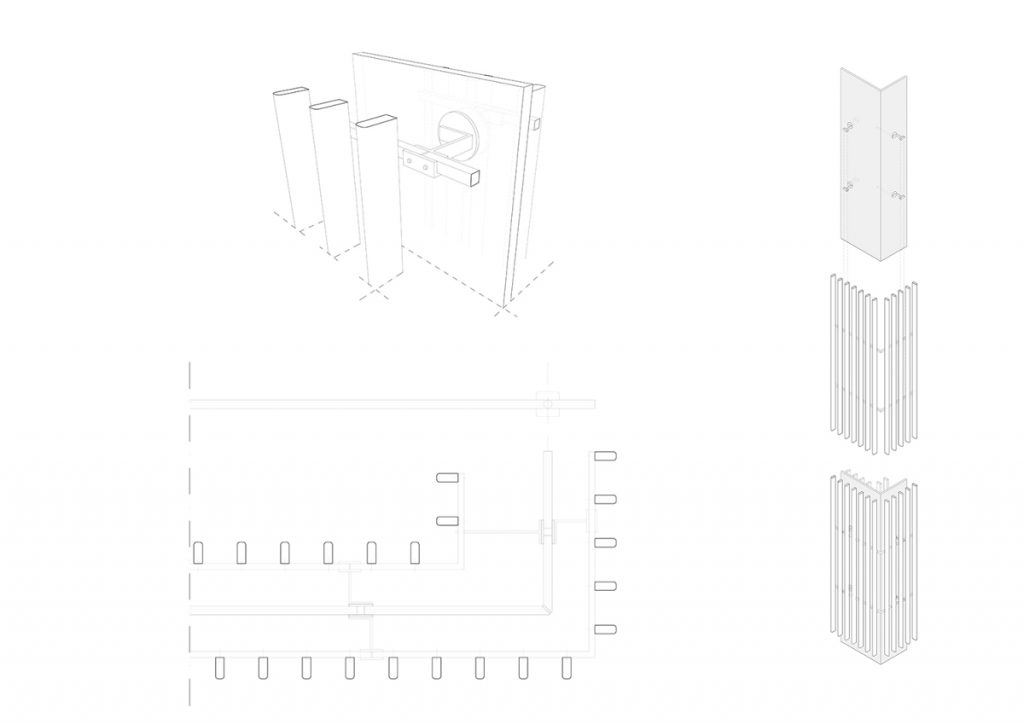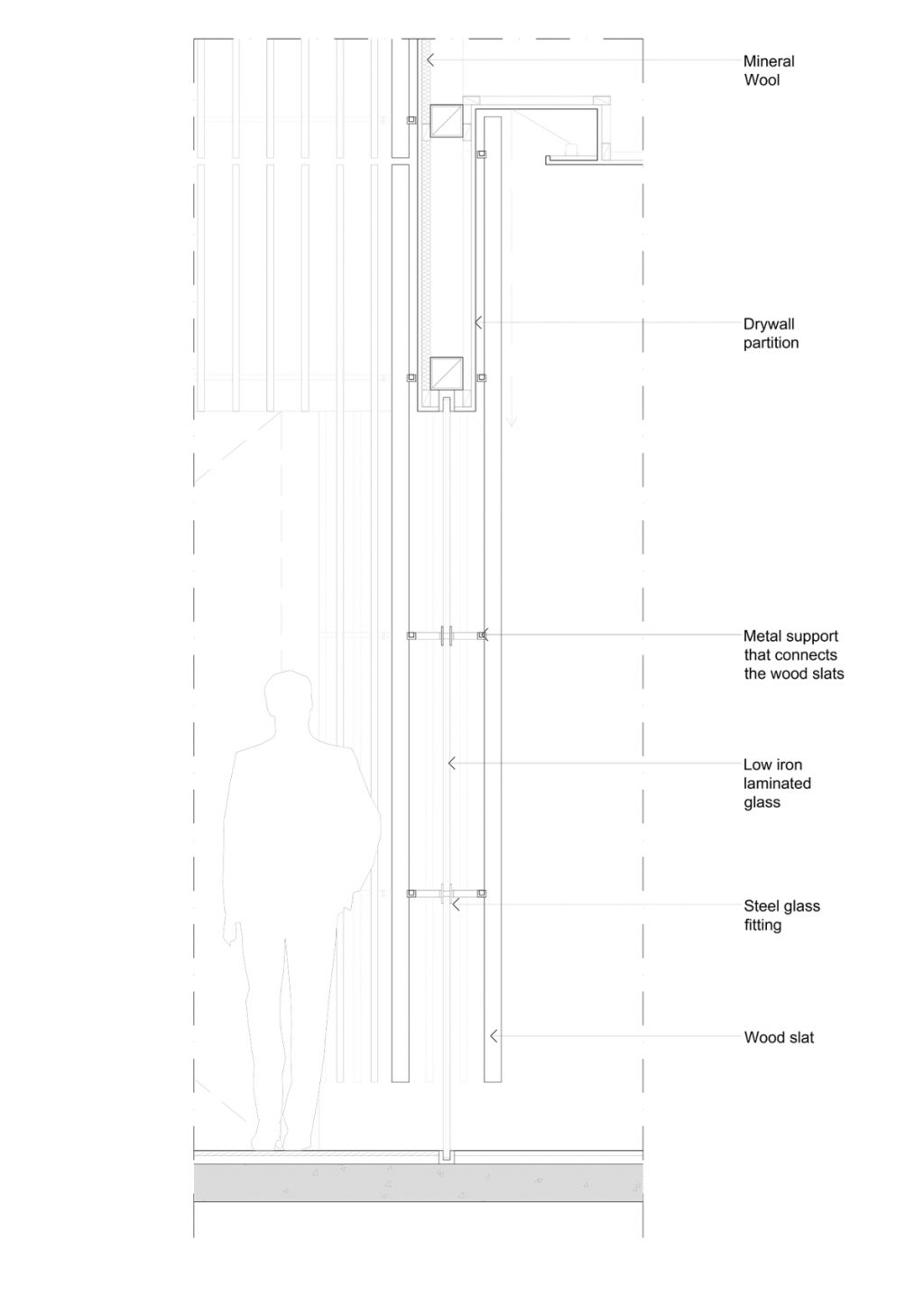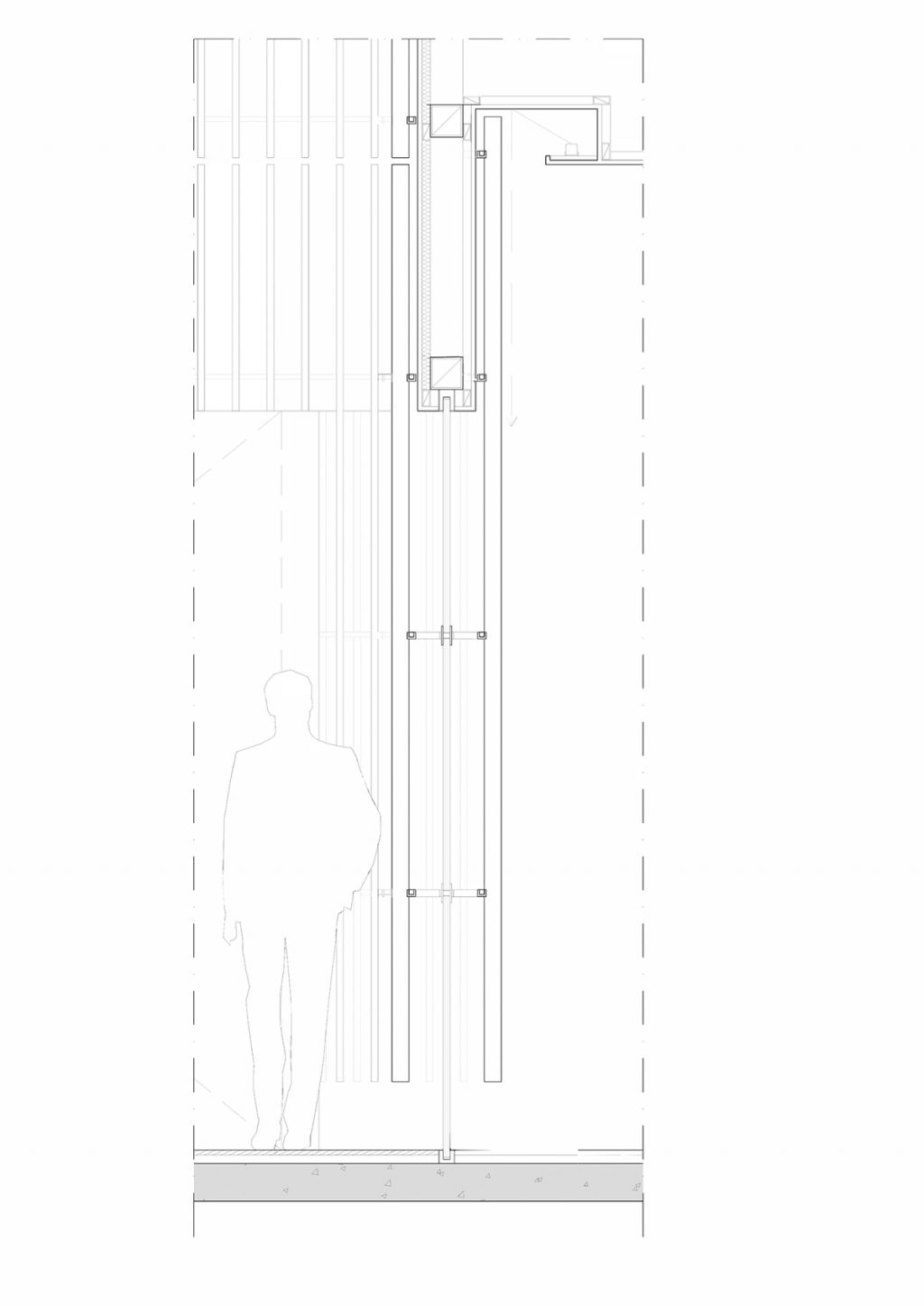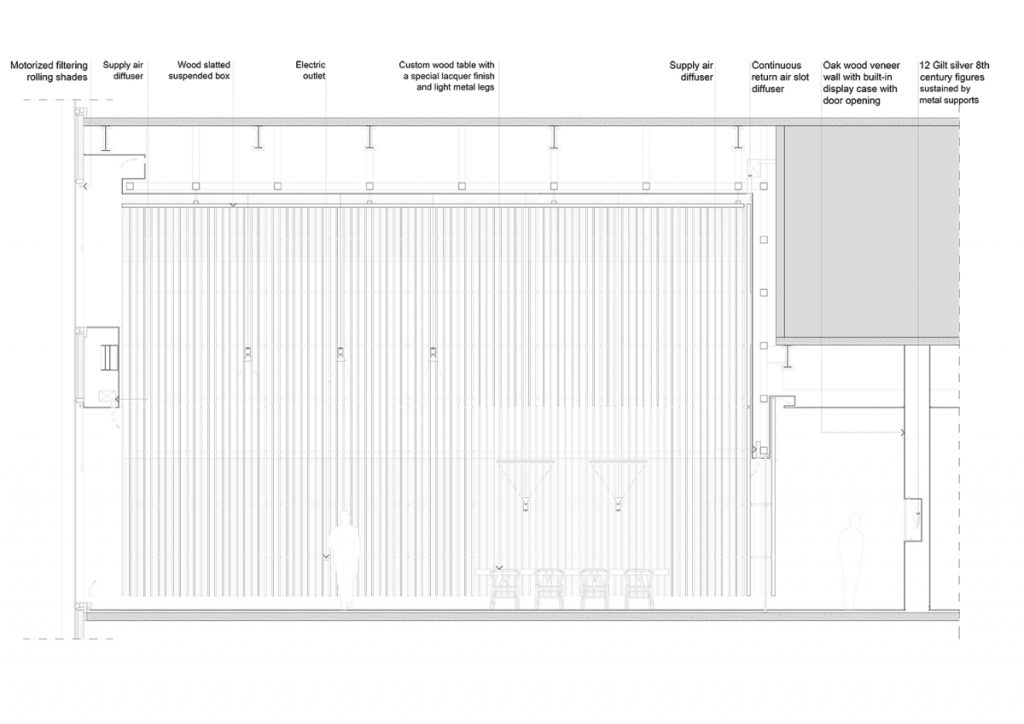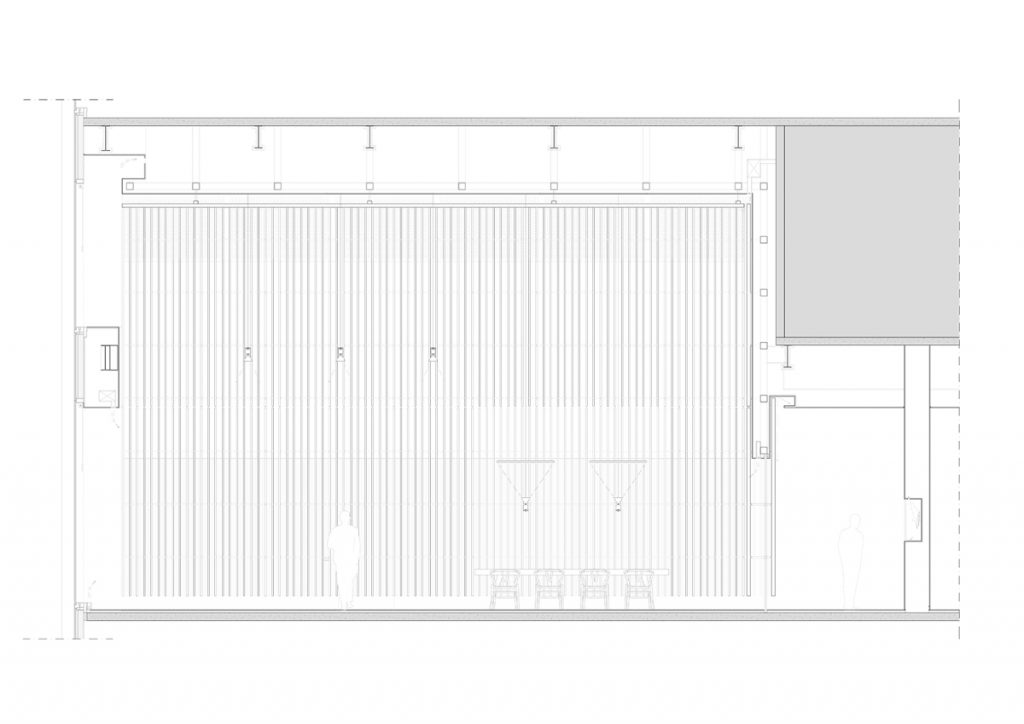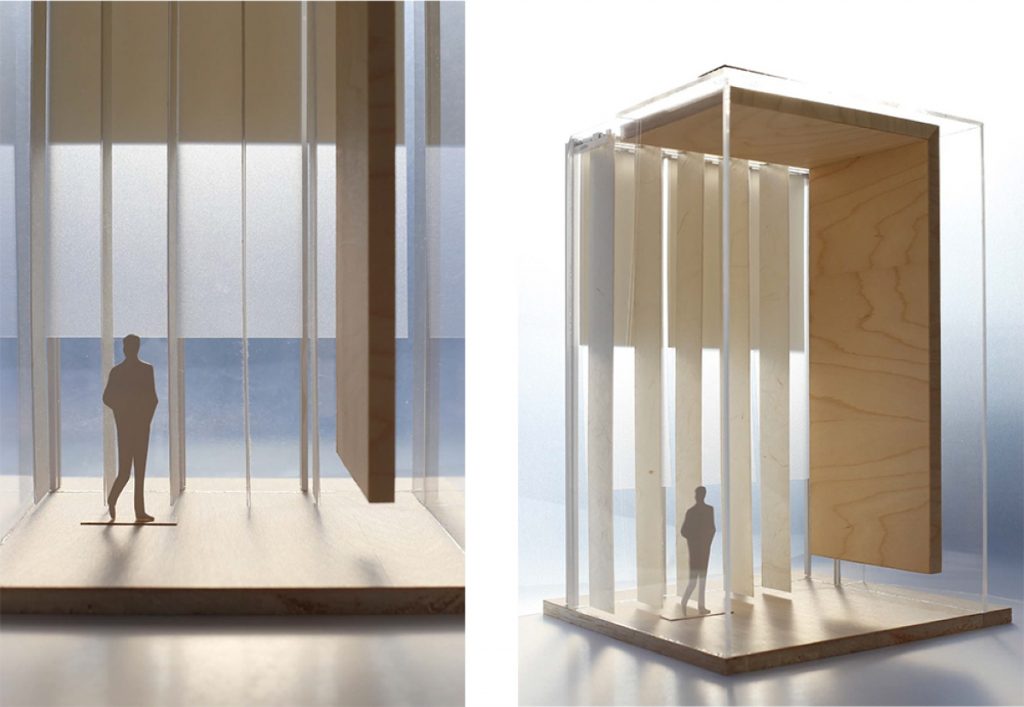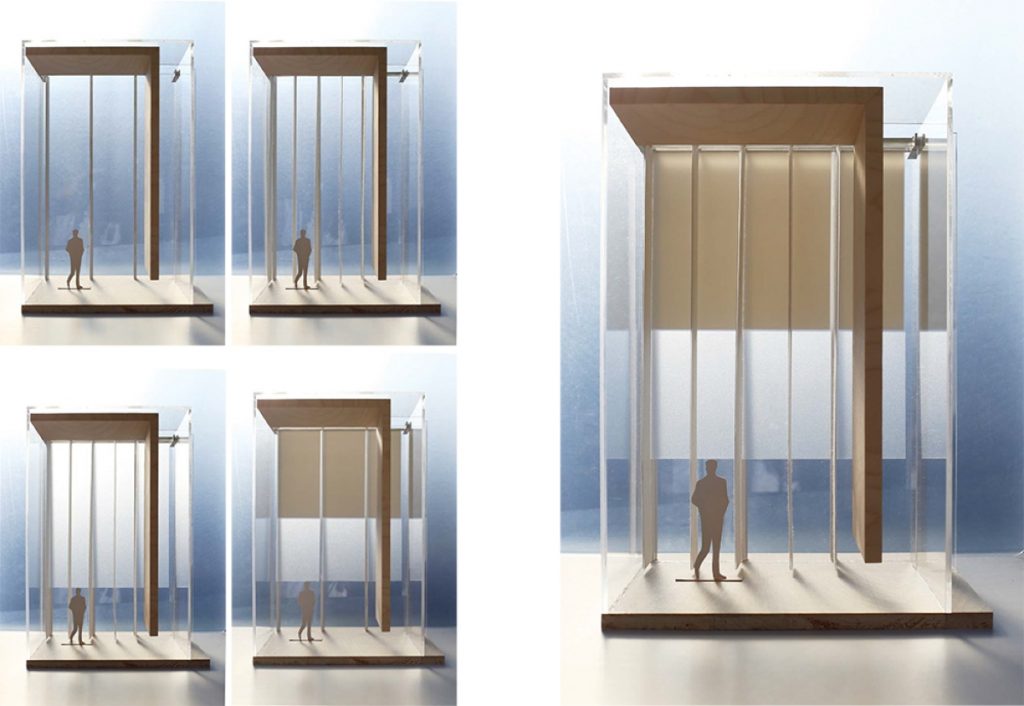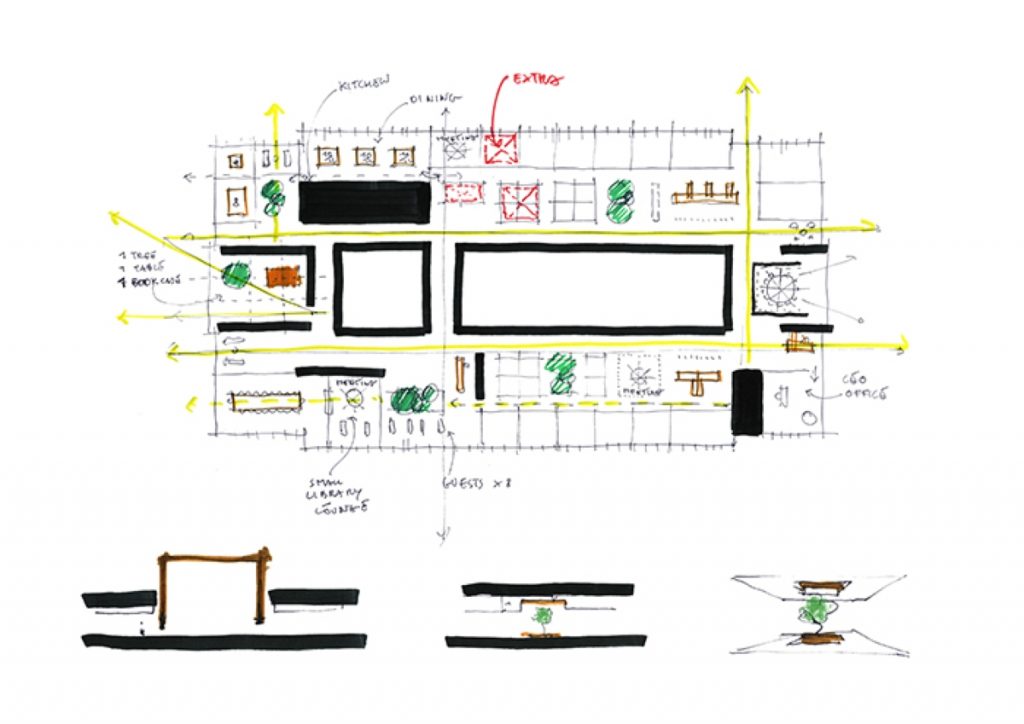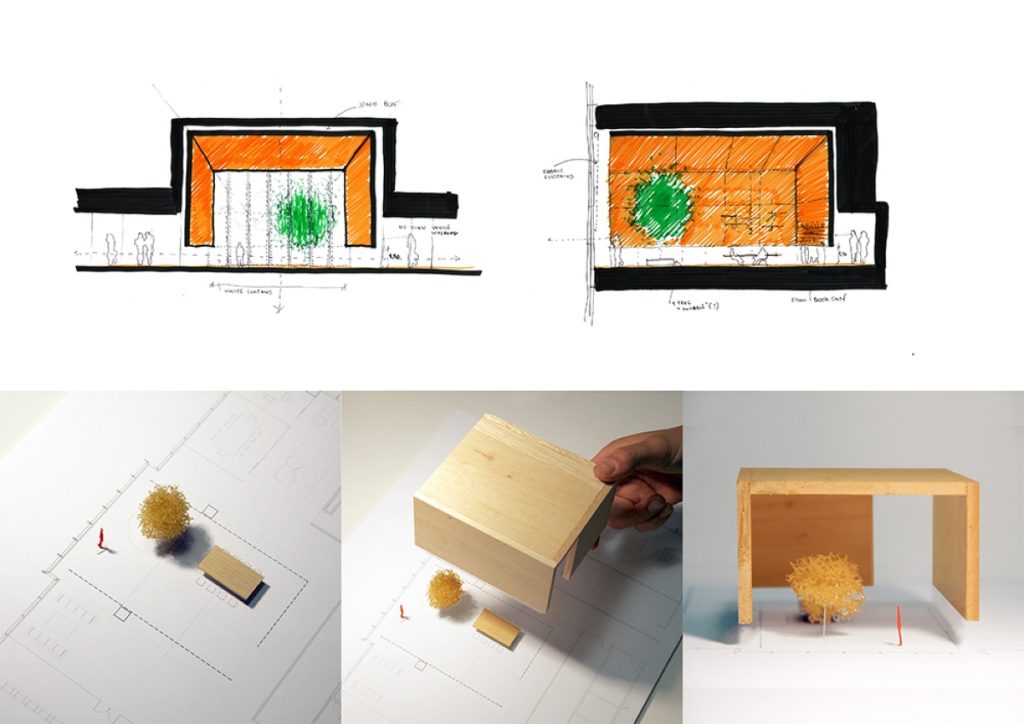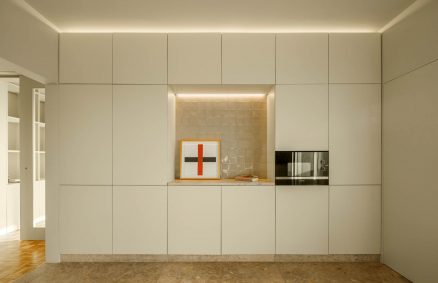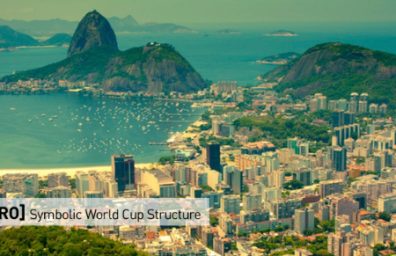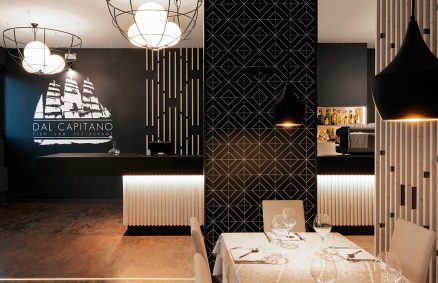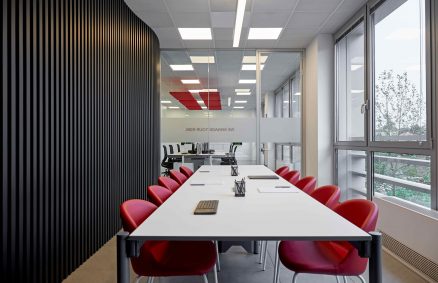Suspended in the clouds, but well rooted in the context, the new executive offices designed by the Roman firm Alvisi Kirimoto they occupy the entire 32 floor of a newly built skyscraper in the bustling former industrial district of West Loop, Chicago. The project, designed to accommodate the client's headquarters and part of its collection of works of art, is spread over a surface of 2.600 sqm, inside a tall 224 m building, located in the heart of the city, on the bank of the homonymous river.
The architects Massimo Alvisi and Junko Kirimoto tell: “The moment you step out of the elevators onto the 32nd floor, you feel like you're immersing yourself in the city again - at a different height and perspective, sure, but with your feet planted firmly in the streets of Chicago. In fact, it is precisely the layout of the city with its surprises, which we have thought of projecting within this space: you walk among pieces of contemporary, oriental or archeology art, surprised from time to time by strong colors or double heights. unusual for a skyscraper, guided by the fast pace of the walls, the light and the visual axes. The first input, in fact, was to privilege the latter and leave the corners free to always maintain visual contact with the city. "
The main entrance is located in the structural core of the building, which contains all the services and facilities. Entering, two opposing rooms are immediately visible: on one side the reception and on the other the playroom, both characterized by a large window that connects the visitor with the two faces of Chicago, the more urban one on one side, and the more territorial from the other. From a planimetric point of view, the North front hosts the most representative and aggregate functions such as the reception, the meeting room, the Winter Garden, the exhibition routes and the restaurant area, while the South-facing rear houses the private offices and some areas common.
The interiors feature full-height natural wood walls, glazed partitions and suspended panels, which, depending on the combinations, outline the different work areas. The great flexibility and transparency of the elements allows visitors and employees to enjoy breathtaking views even in the most private areas bordered by opaque surfaces.
Wooden walls, which are dematerialized in vertical slats to calibrate the degree of privacy and brightness, characterize the main lines of the project. These constitute the leitmotiv that accompanies the visitor until the discovery of the Winter Garden, a multi-functional double-height environment that represents the beating heart of the project.
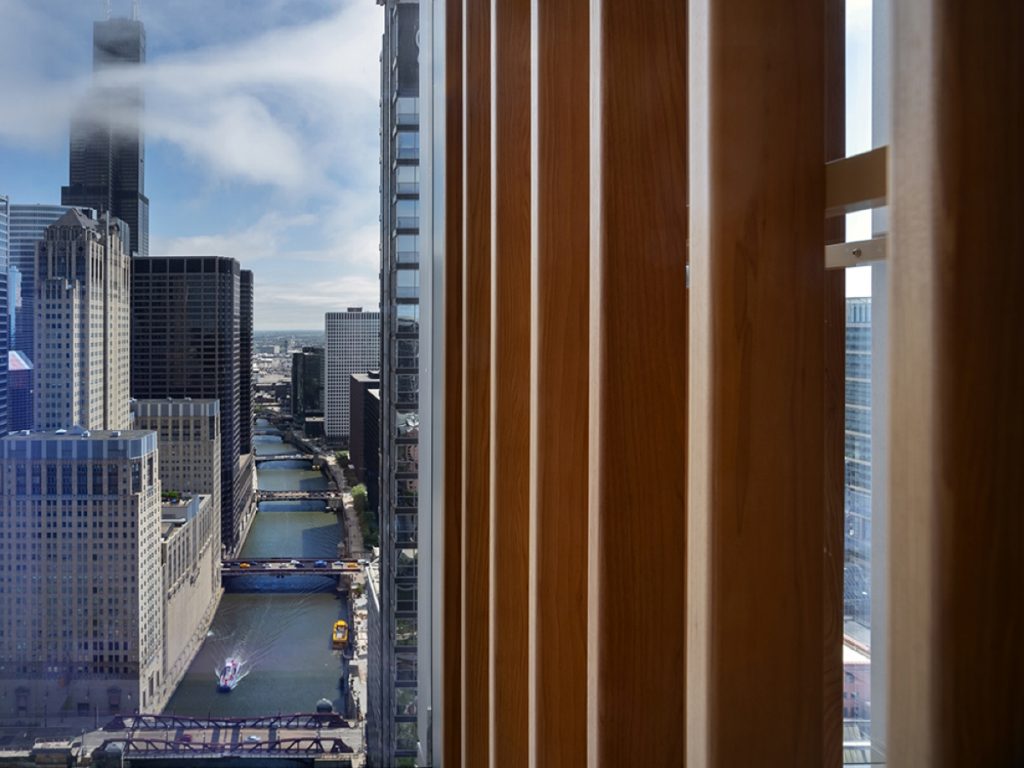
"From the Blues structure, music that permeates the city of Chicago", continue the Architects, "We have taken up the concept of 'Tension and Release'. The 3,60 m ceiling height, absolutely extraordinary for an office, has allowed us to alternate suspended elements, such as fabric panels, with sculptural elements resting on the floor and left to their original height. This compression and suspension game culminates in the volume of the Winter Garden: a unique space suspended in the city void, a material and tactile diaphragm that contains a space for music, art and events as well as for meditation and reading . "
Depending on the point of view, the skin of the Winter Garden, composed of two rows of suspended wooden slats and not aligned with each other, with a transparent glass placed in the middle, dissolves or becomes opaque, generating multiple points of view and an interesting game of lights and shadows. Similar to a light box, the environment allows the light to be directed through a system of double darkening and filtering curtains and to diffuse it in the adjacent spaces with its wooden slats.
The room is completed by a bamboo suspended sculpture, commissioned by the Japanese artist Ueno Masao, and the table designed by Junko Kirimoto, with a Japanese lacquer finish.
The space has an oriental touch and skilfully measured proportions, in line with the Italian and Japanese sensibilities that animate the Alvisi Kirimoto studio.
The entire project has been tailor-made in all its aspects, from custom-designed furniture, such as the workstations and tables of the canteen, to the arrangement and choice of gradation of the lighting points.
Even the use of color is weighted: sometimes it gives serenity, others draws space or defines a function. It ranges from the bright orange of the playroom ceiling and the suspended panels in the offices, to the intense red of the panels in contrast with the gray walls of the restaurant area, the soothing rust of Japanese wallpaper at the entrance, the regenerating white of the open workstations space.
Finally, art plays a fundamental role: the offices host a holistic exhibition path of over 1.000 square meters among the client's collection pieces, in a succession of spaces that interpenetrate, overlapping the city and generating unexpected and surprising points of view. .
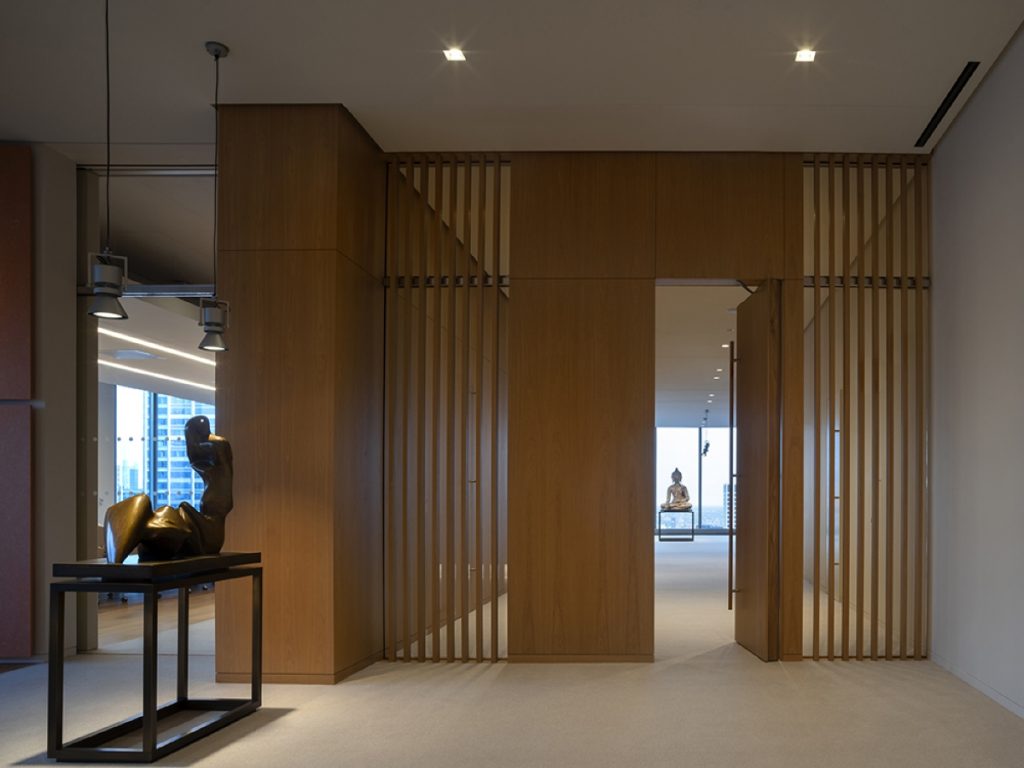
Project credits
Project: Private Office
Location: Chicago, Illinois
Date: 2018
Area: 2570 sq. M
Private customer
Architecture: Alvisi Kirimoto in collaboration with CannonDesign. Alvisi Kirimoto: Concept, preliminary and final design and furnishings, supervision of the executive project, artistic direction CannonDesign: feasibility study, project collaboration, executive planning and local architect
Project team
Team Alvisi Kirimoto: Massimo Alvisi, Junko Kirimoto, Carolina Ossandon Avetikian, Alessio Montanari, Donato Labella, Silvia Rinalduzzi
Team CannonDesign: Mark Hirons, Meg Osman, David Pugh, Angela Furman, Taofik Lasisi
Project Management: ConopCo Project Management
Executive: Executive Construction Inc.
Winter Garden sculpture artist: Ueno Masao
Photographer: © Nic Lehoux

